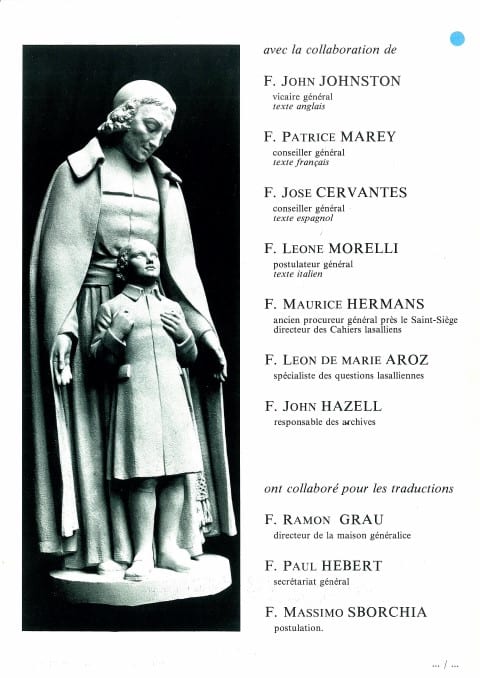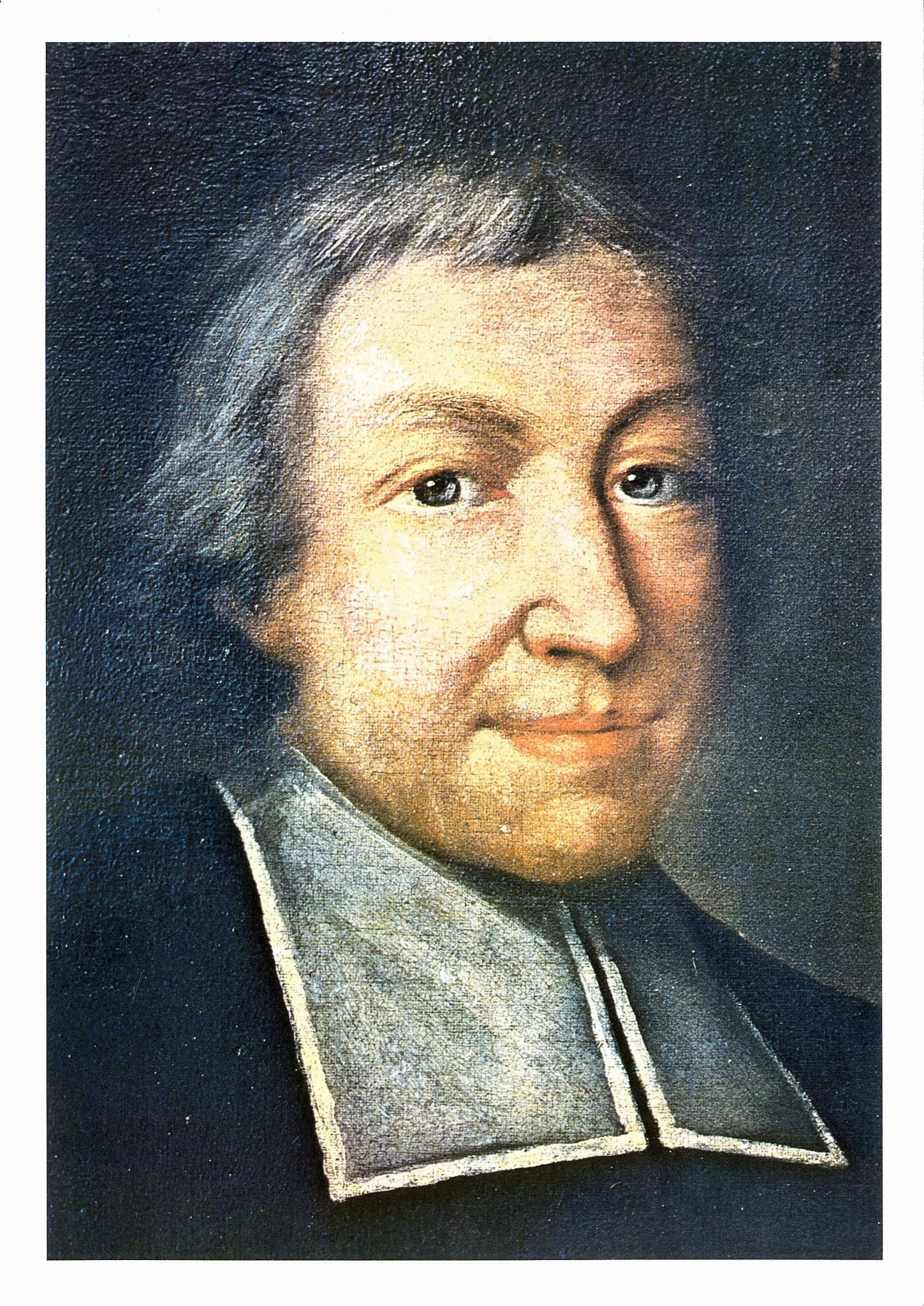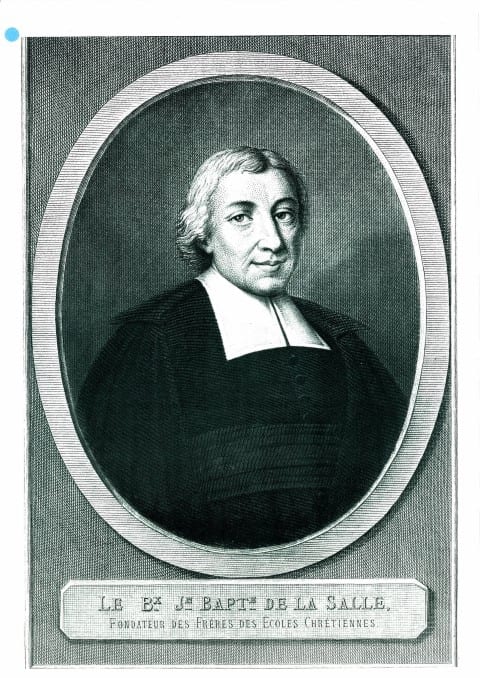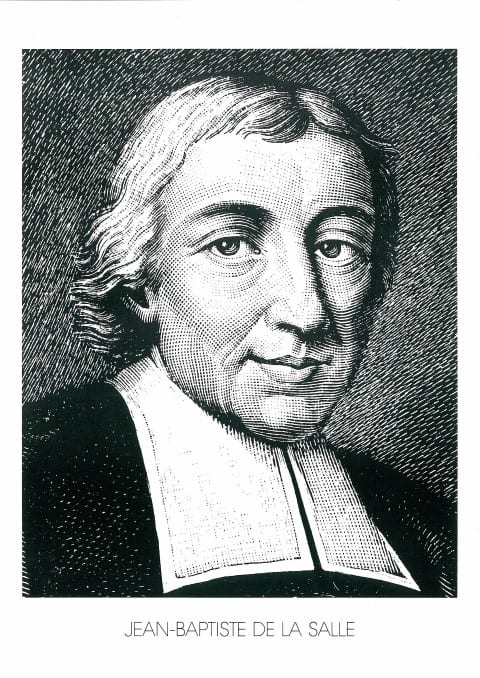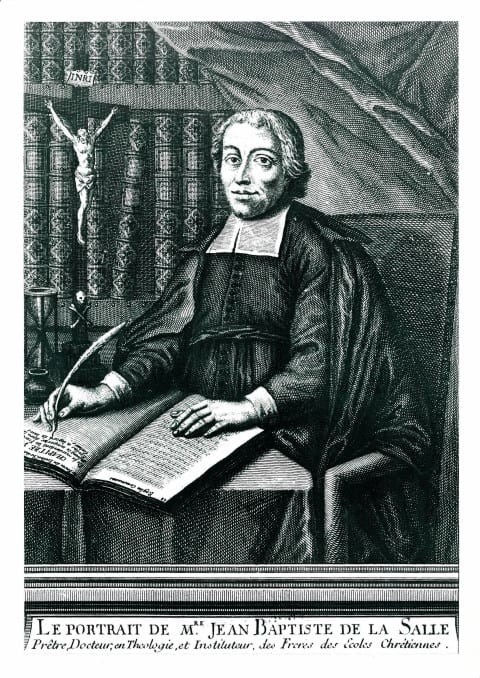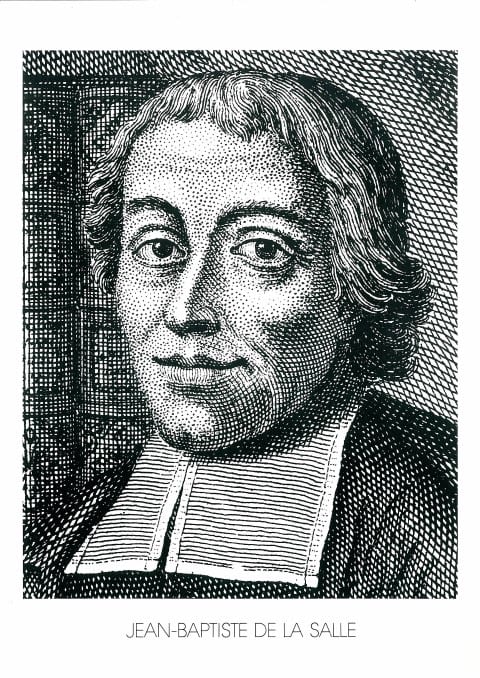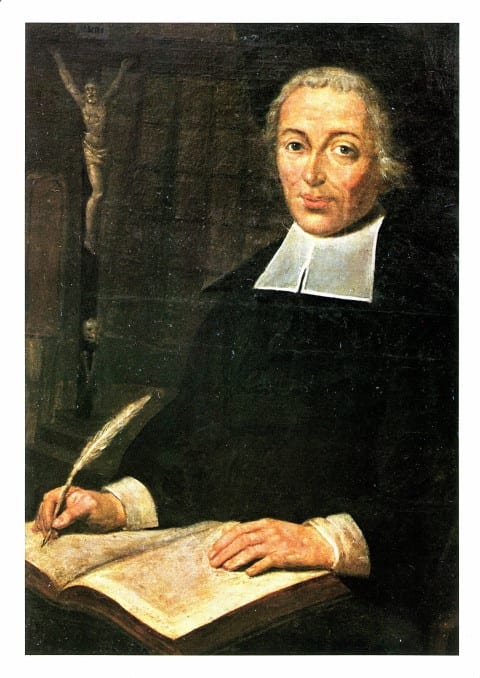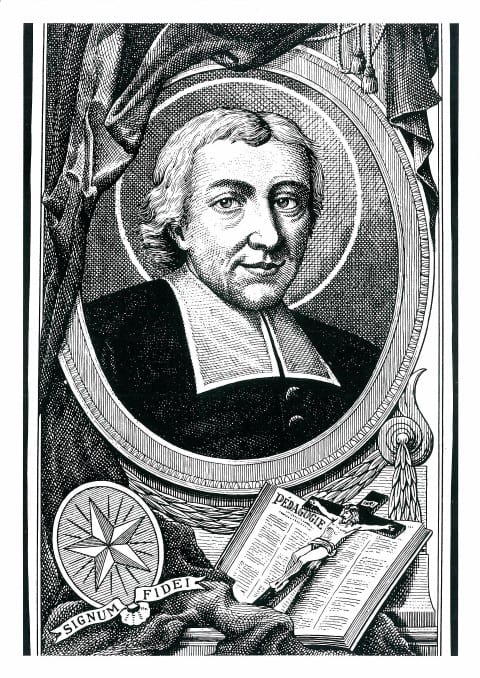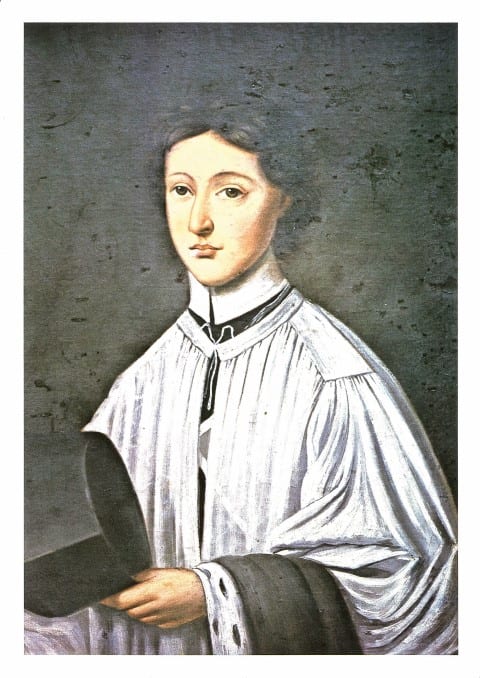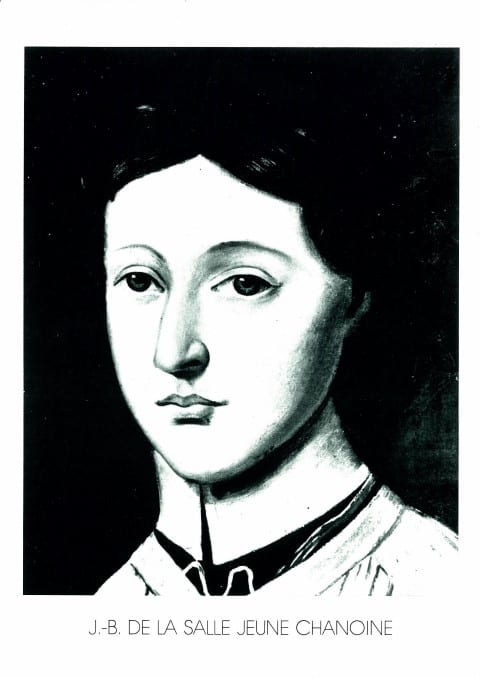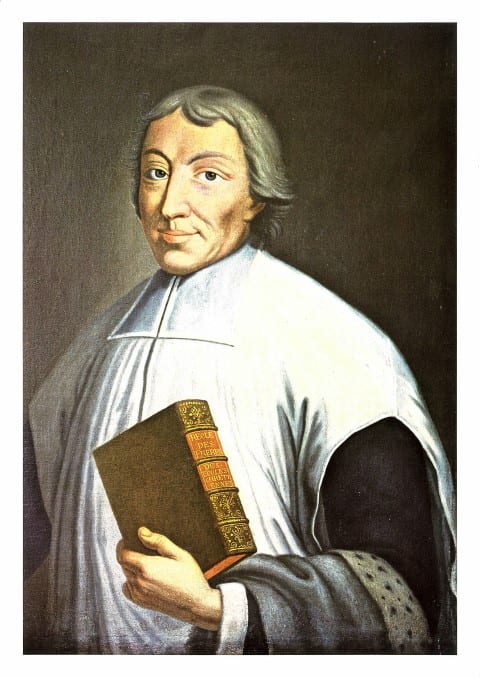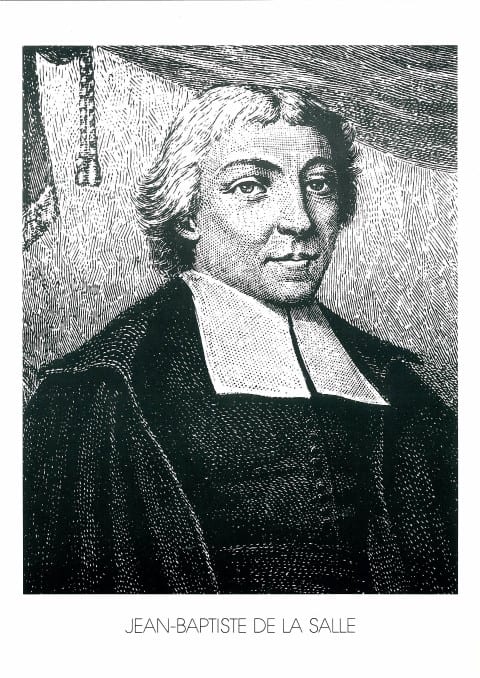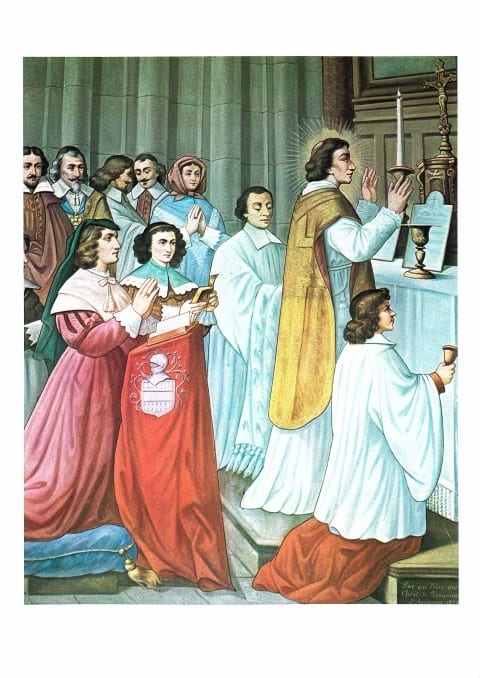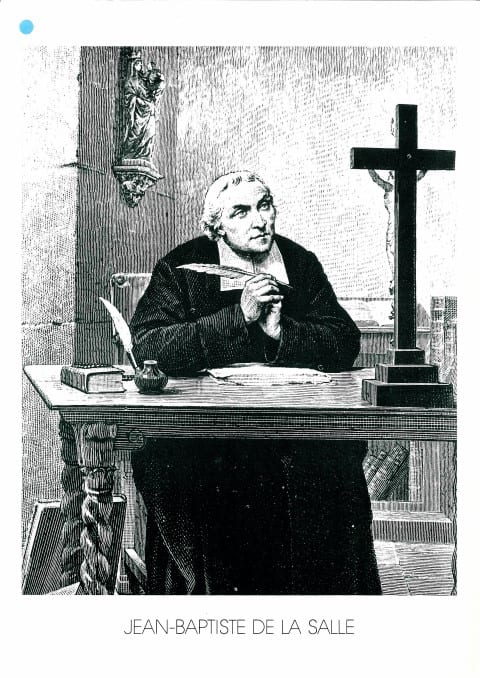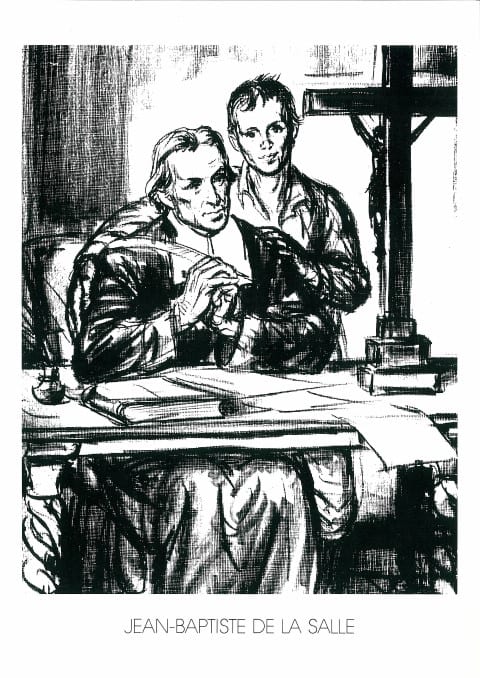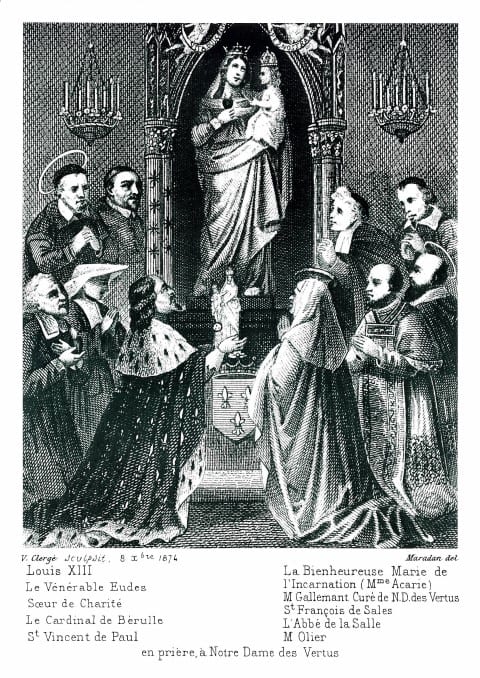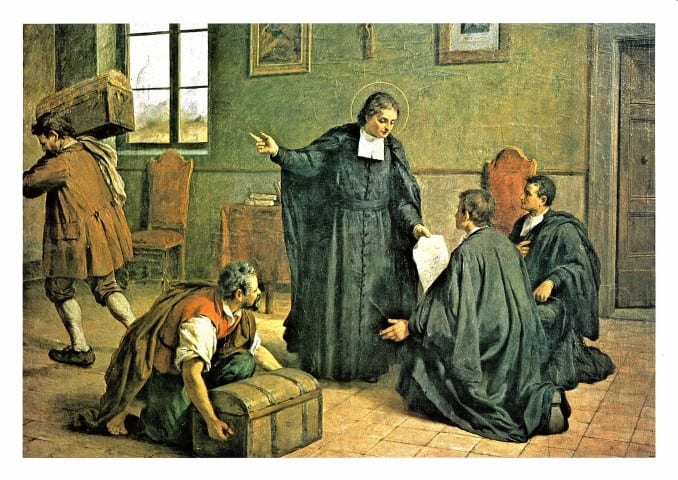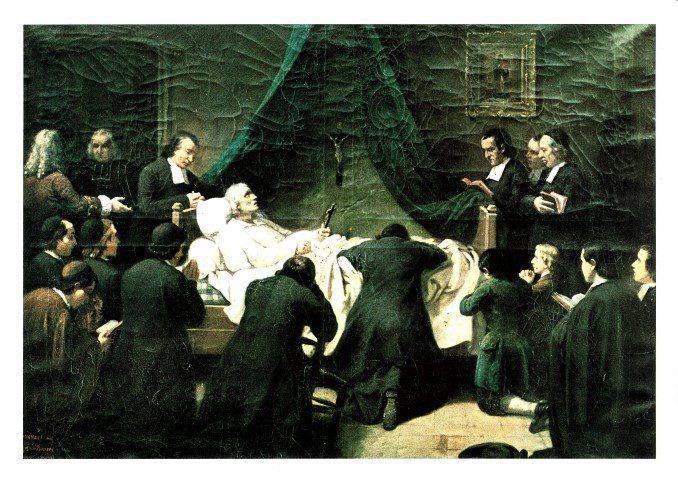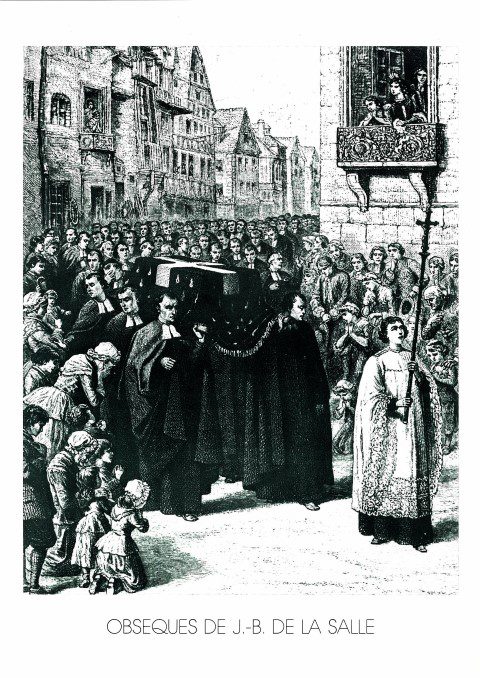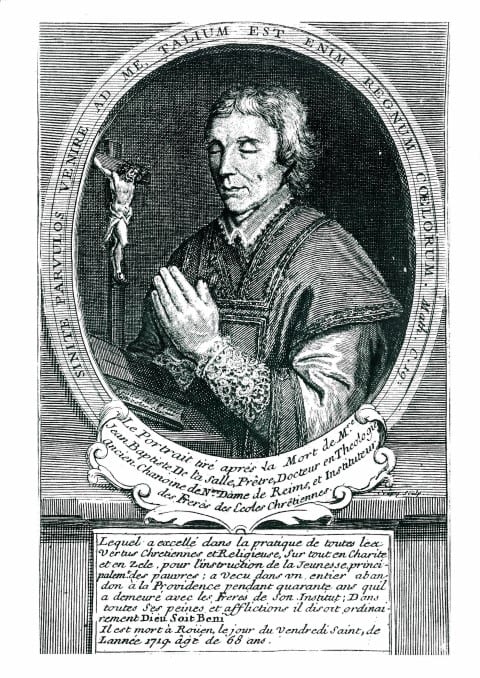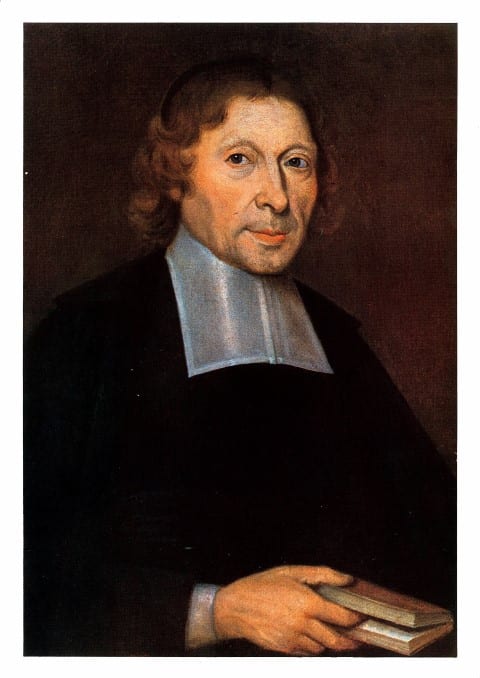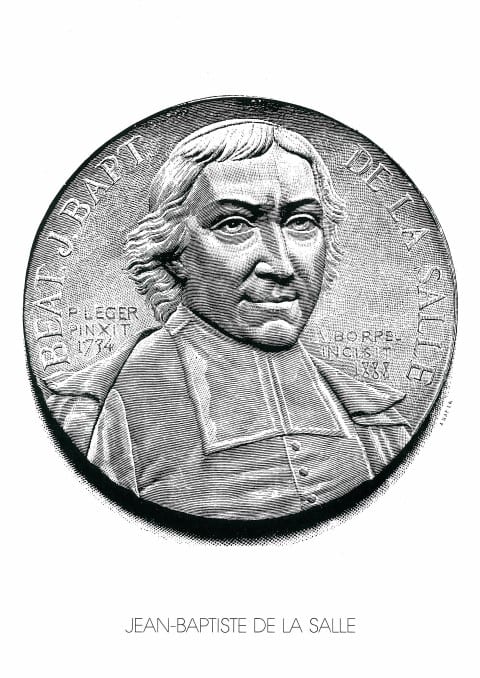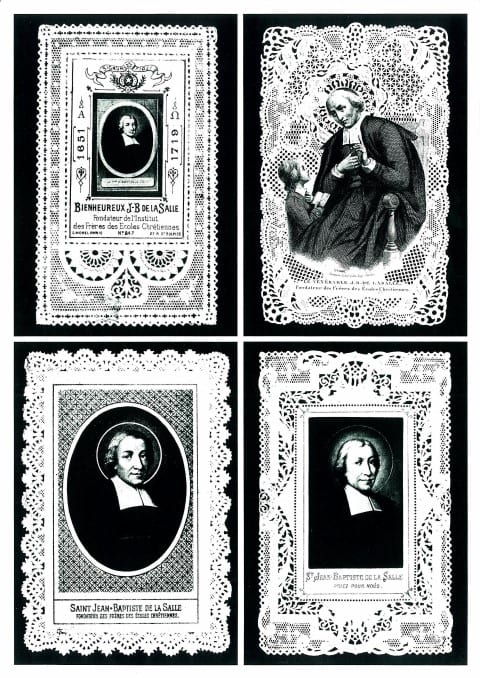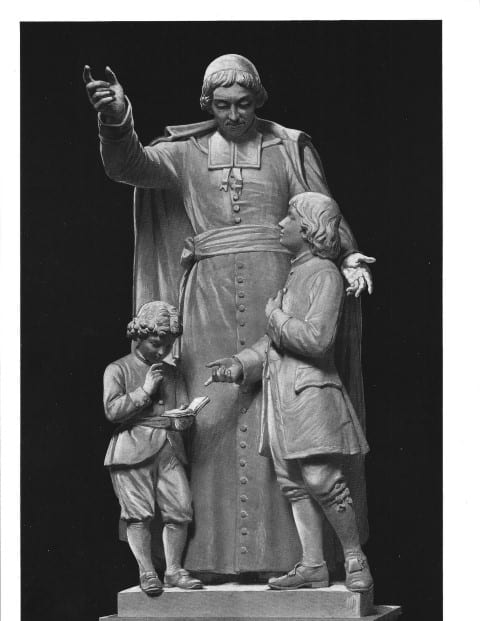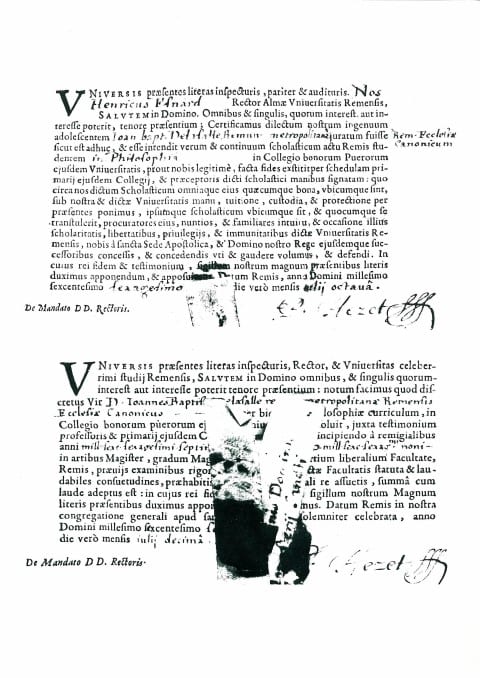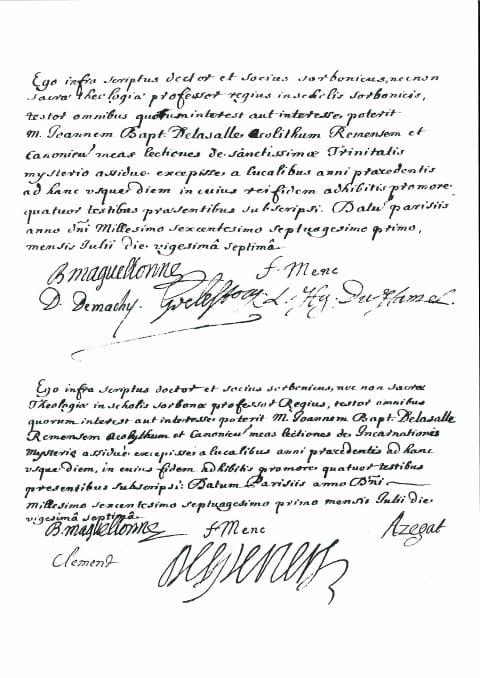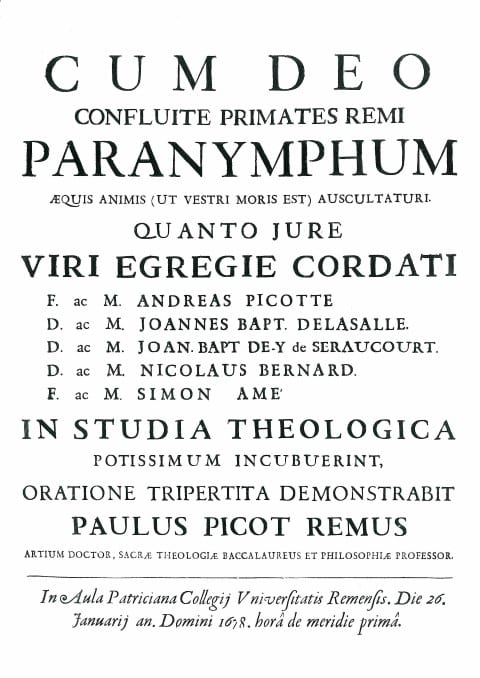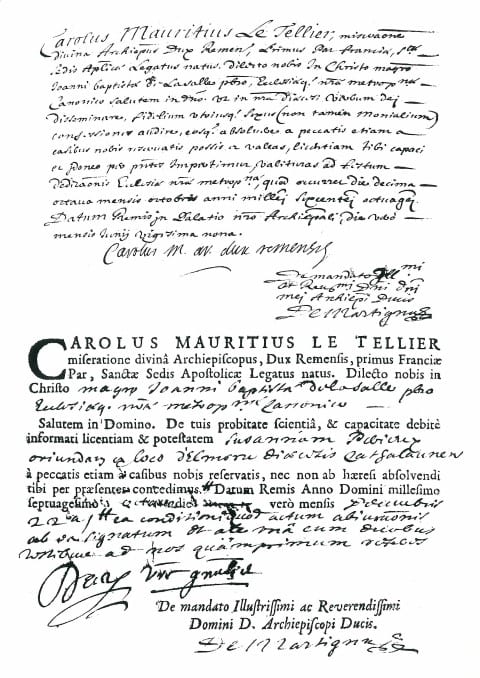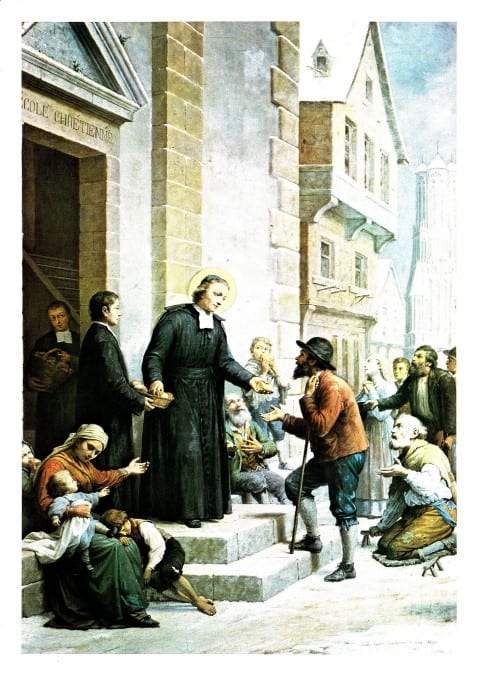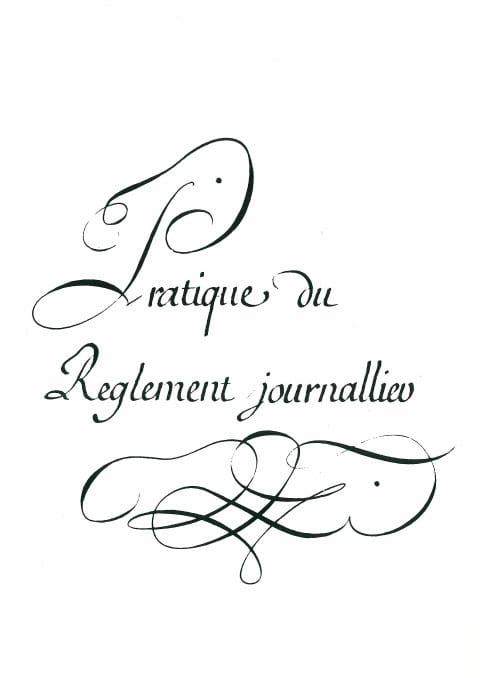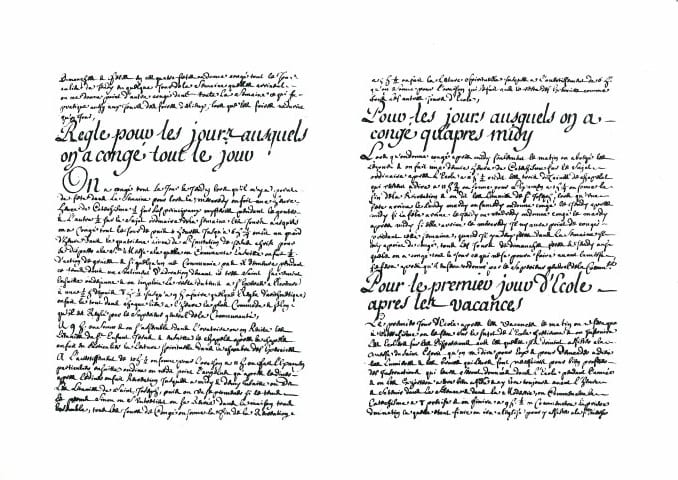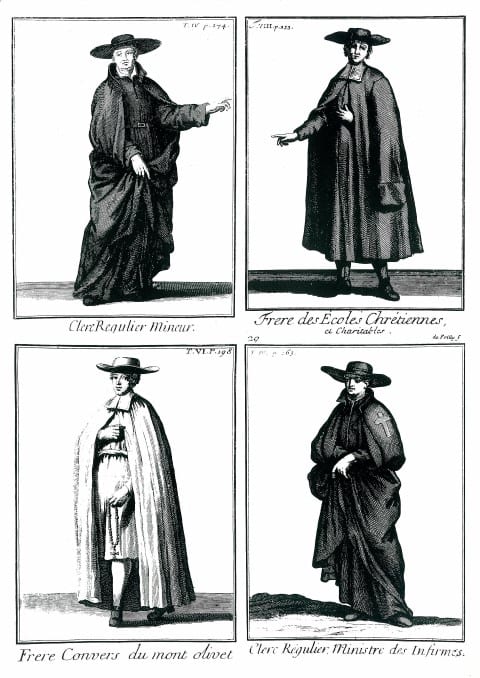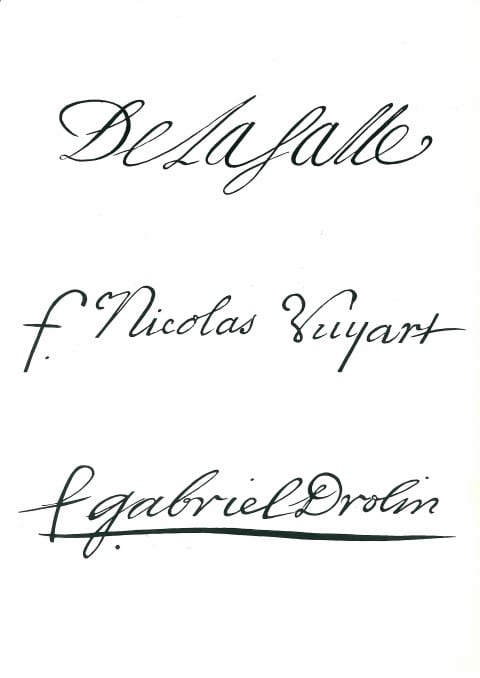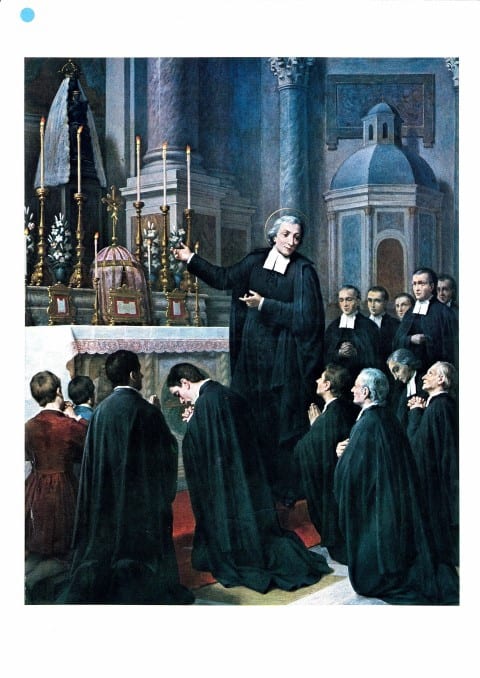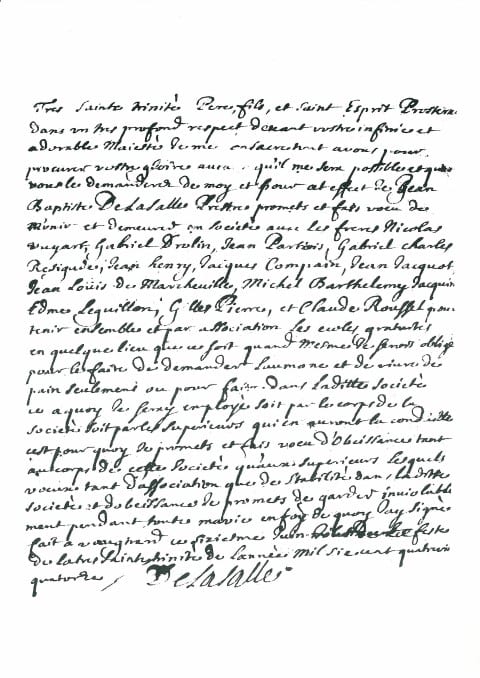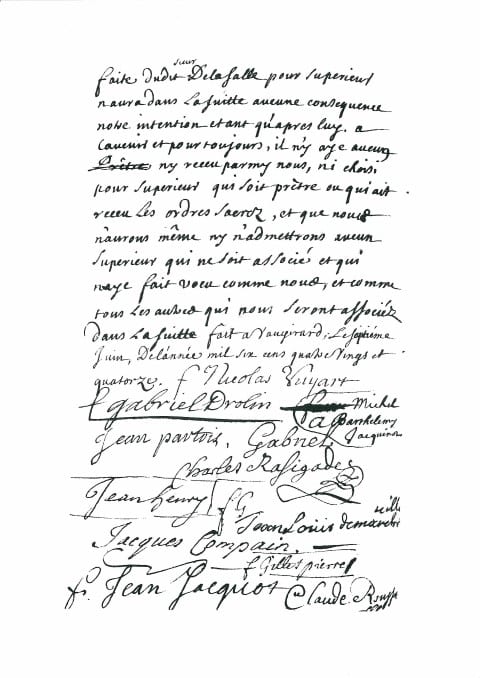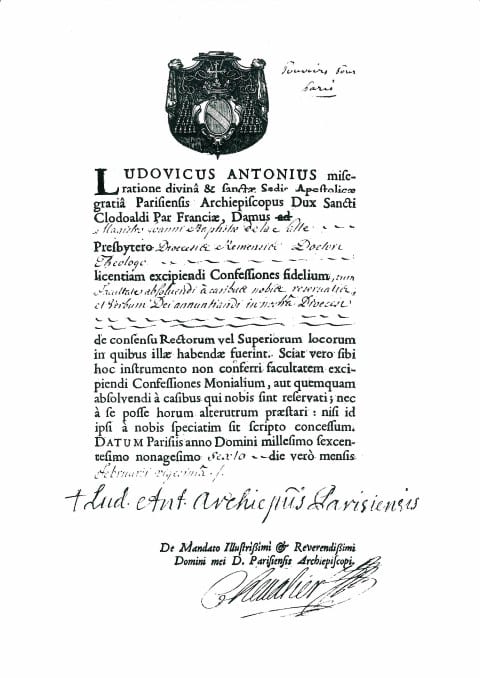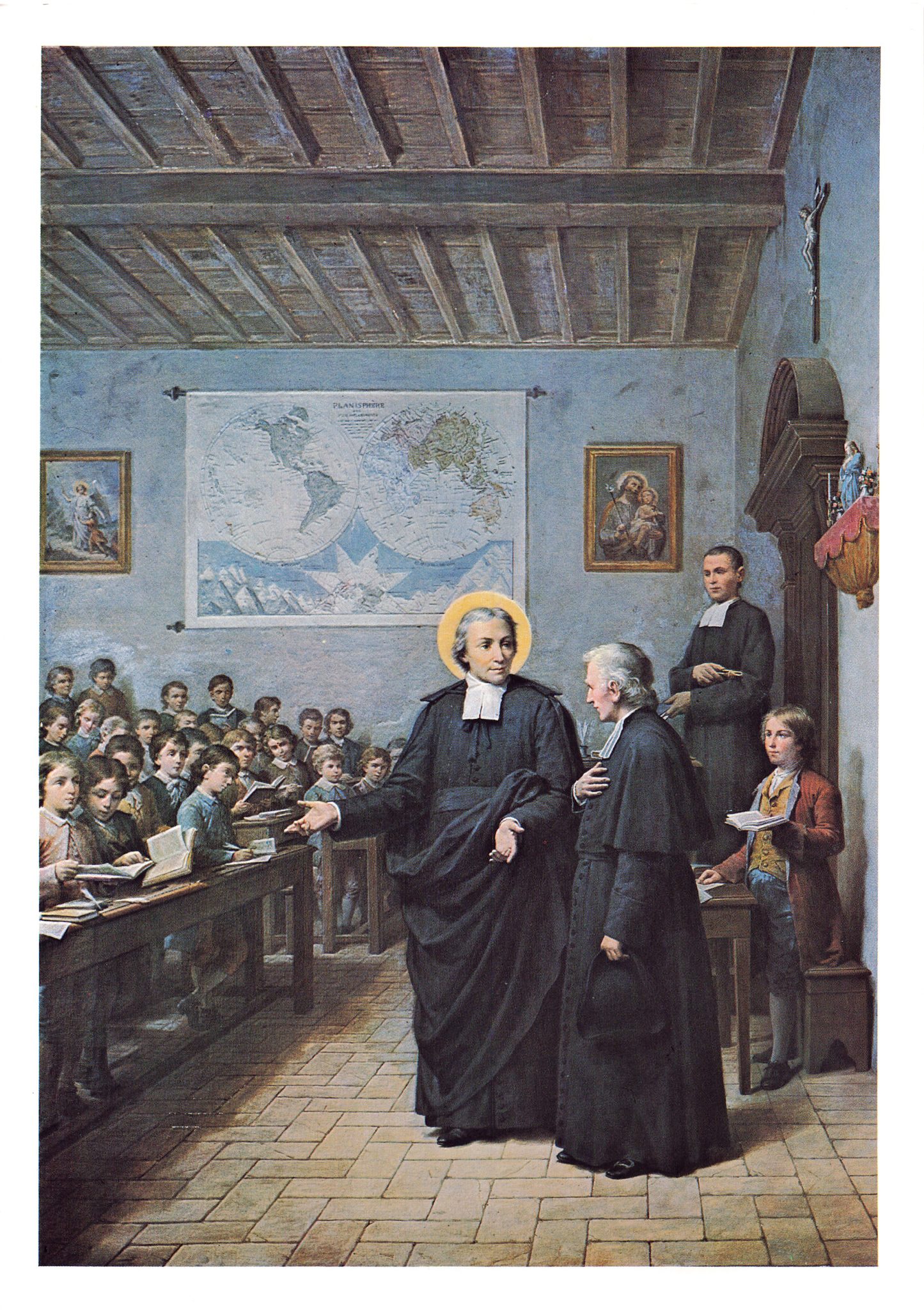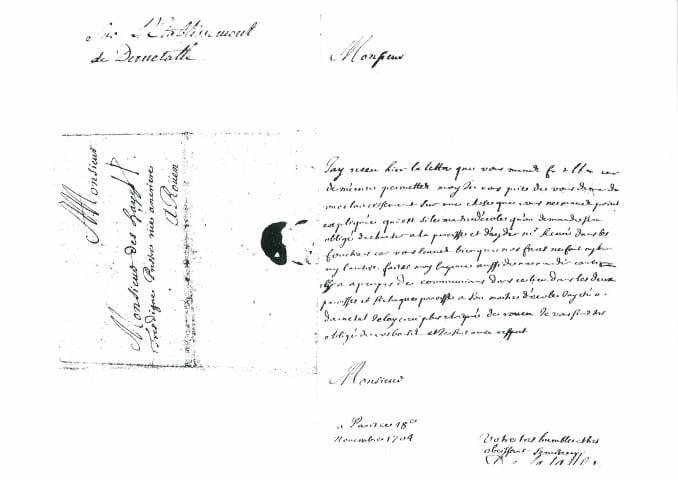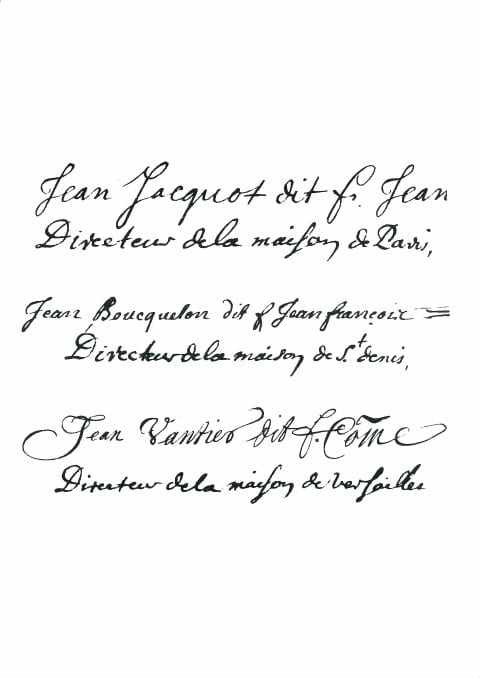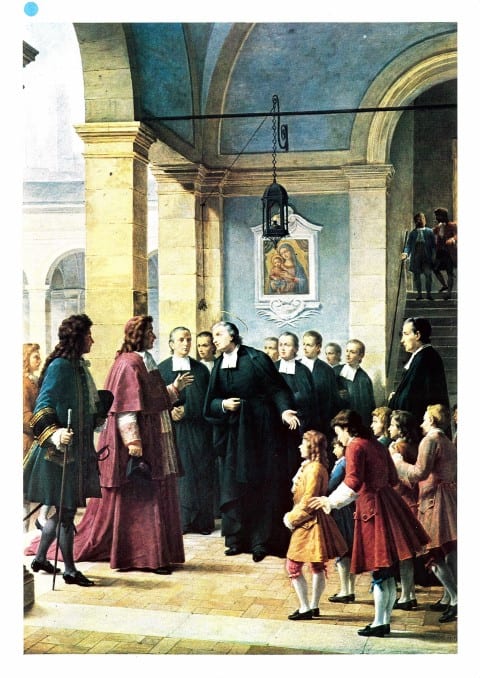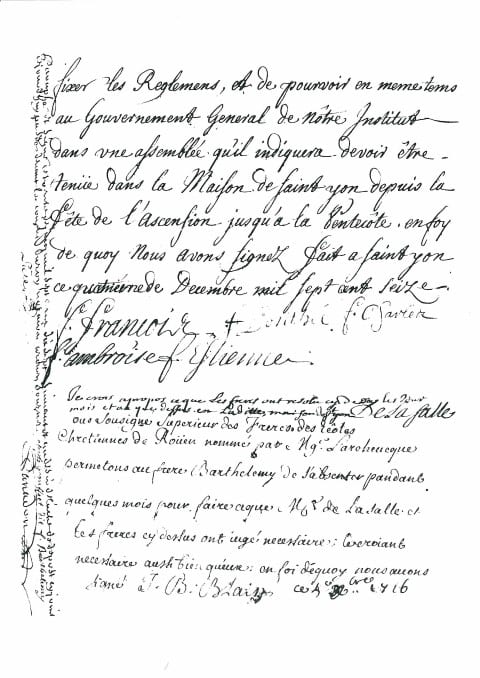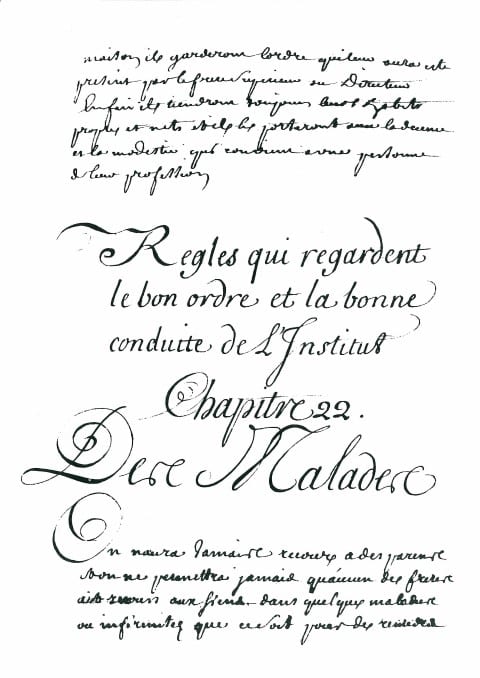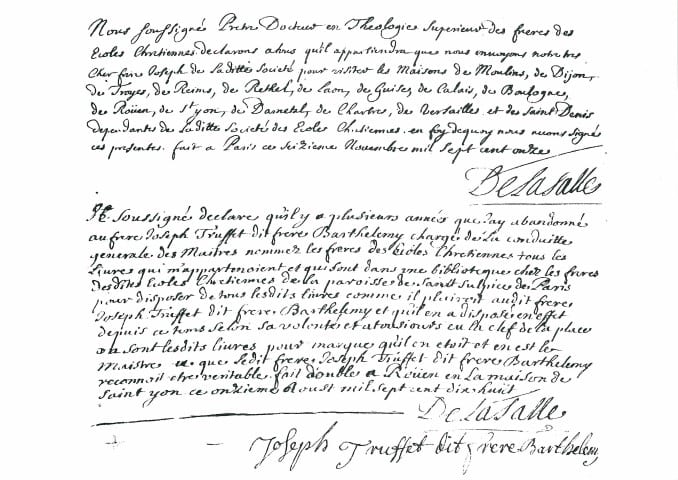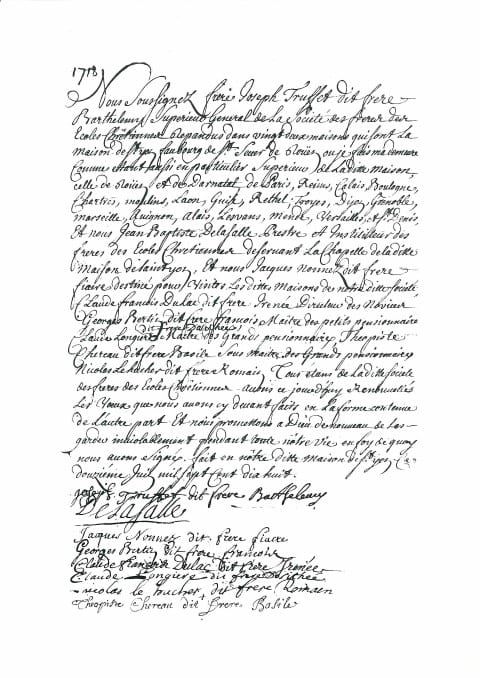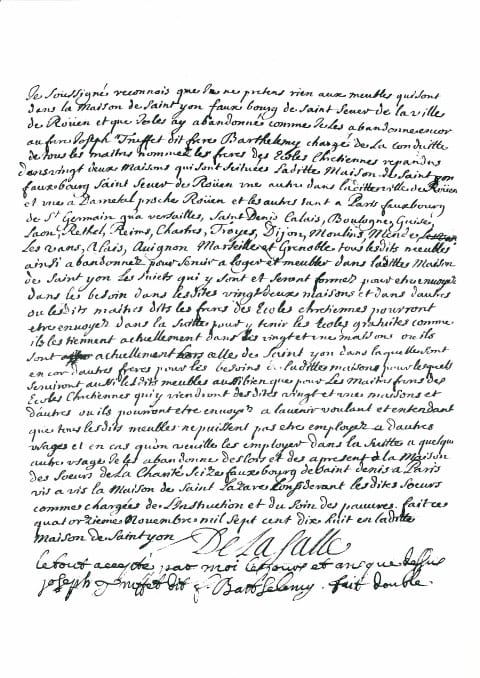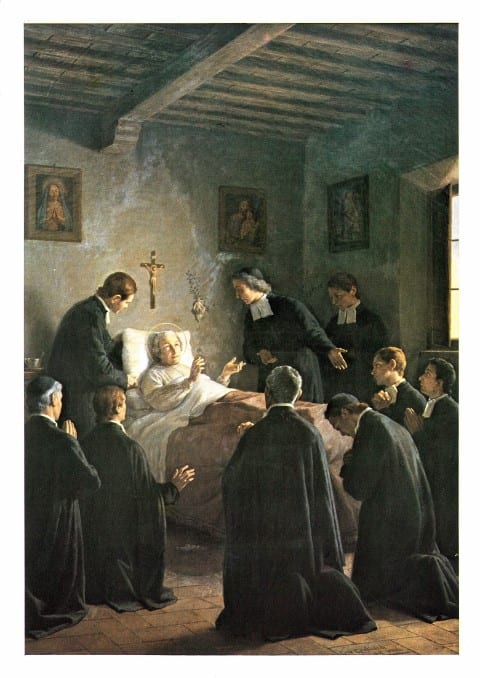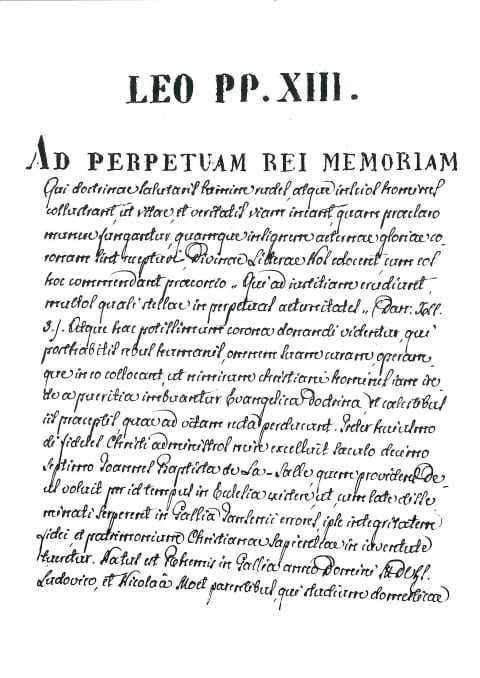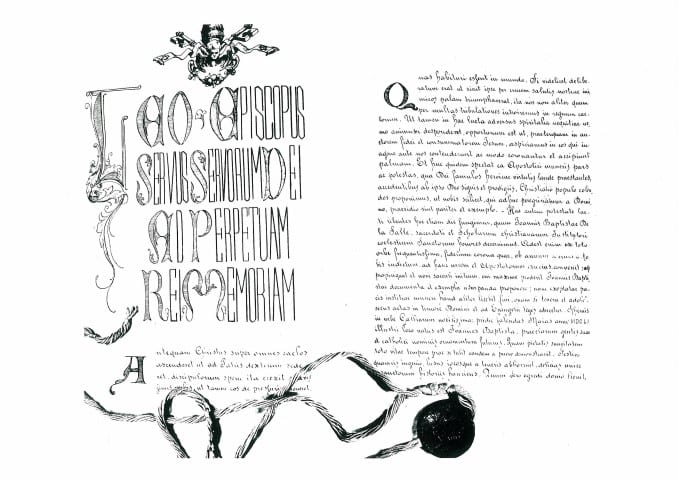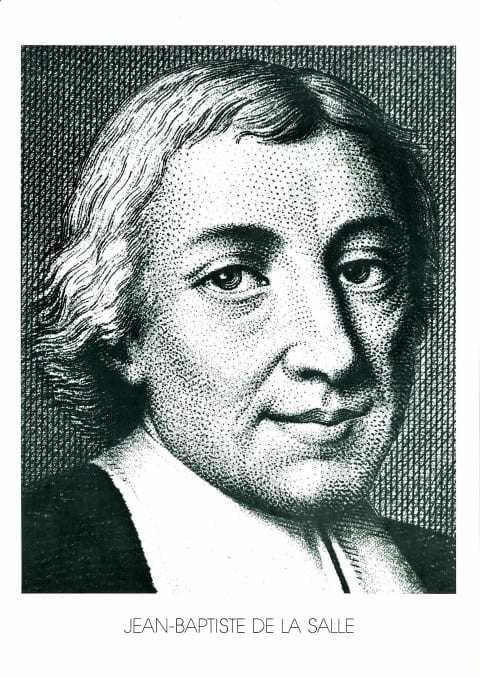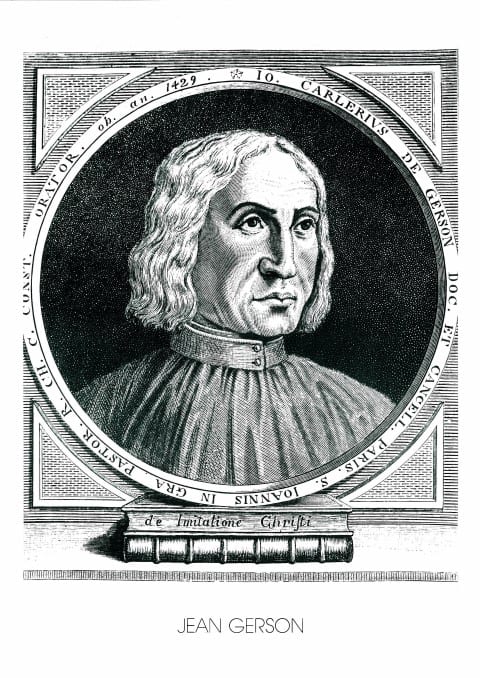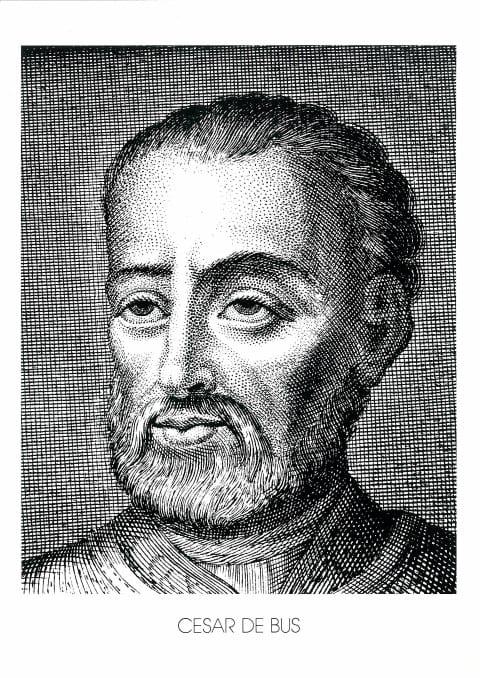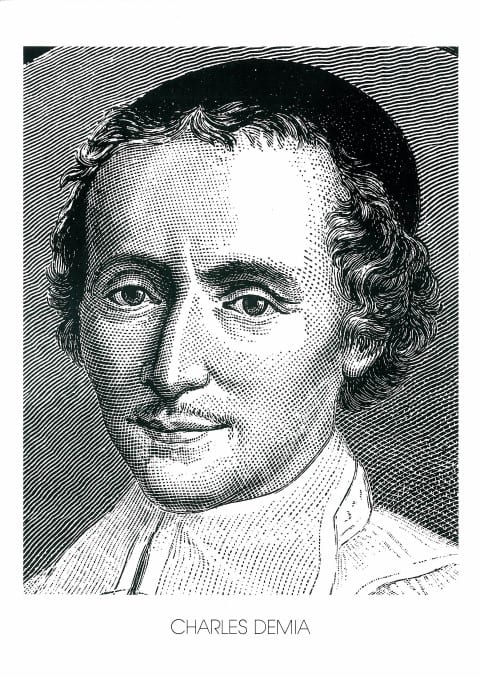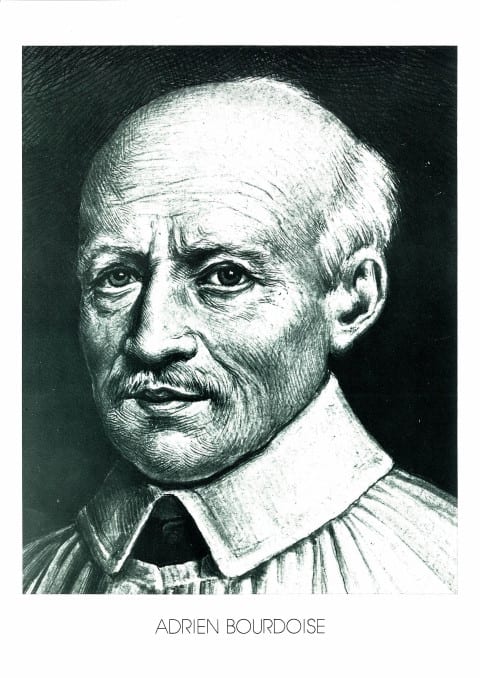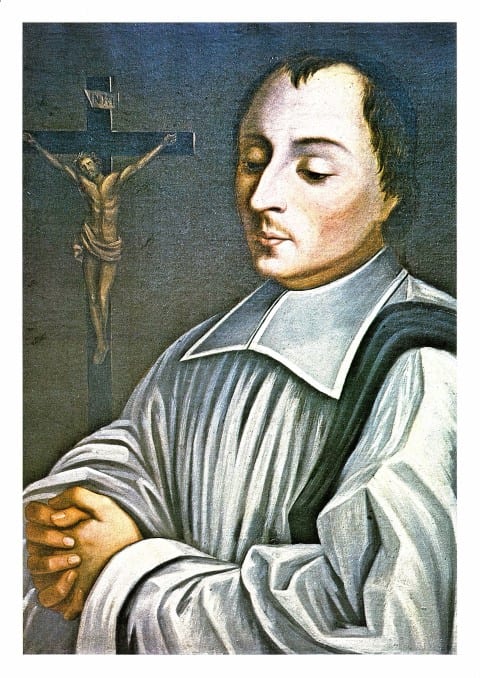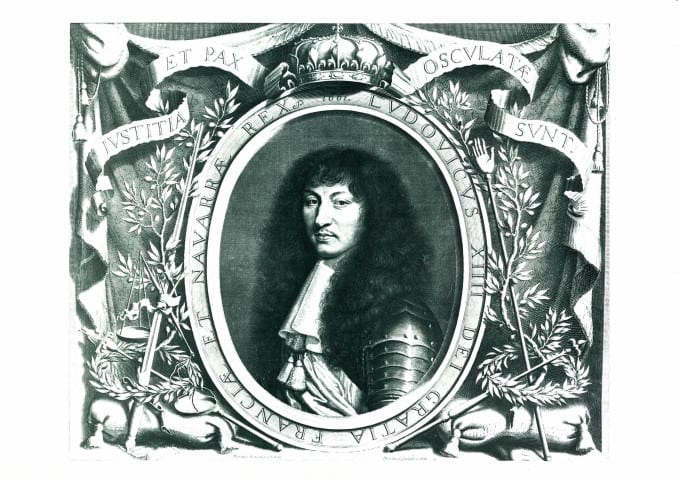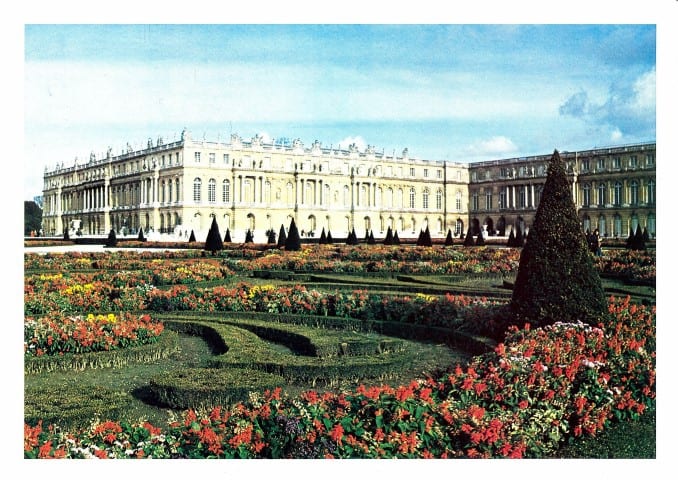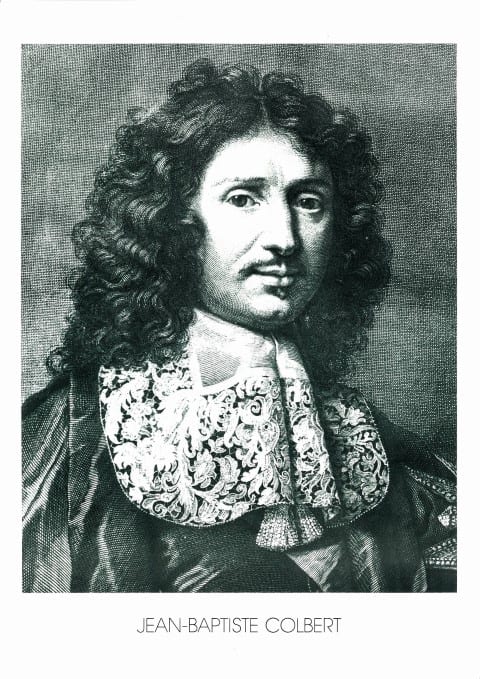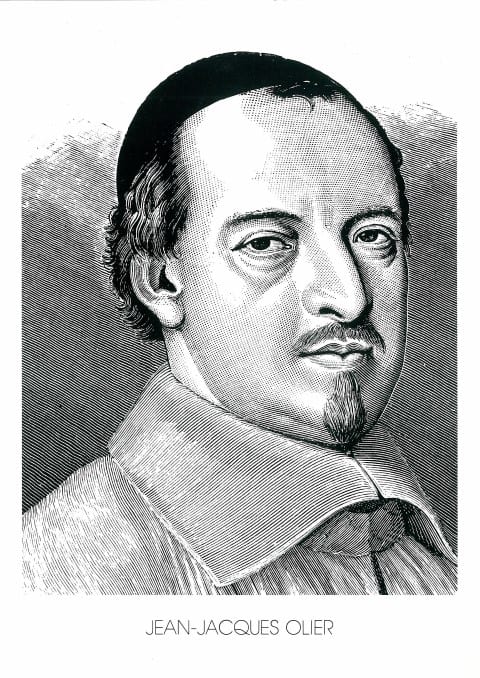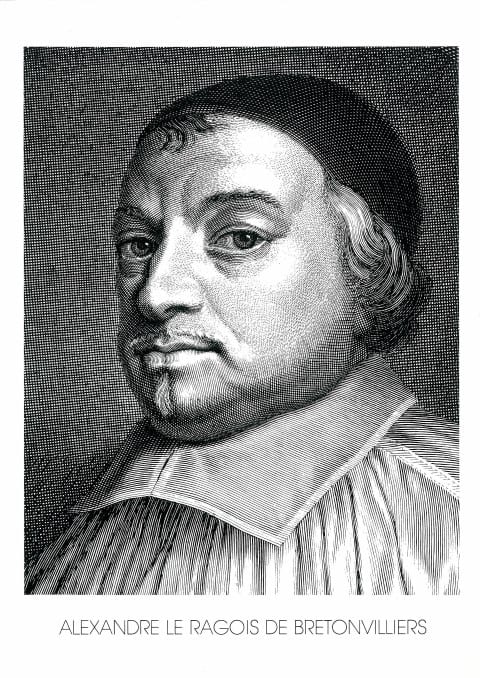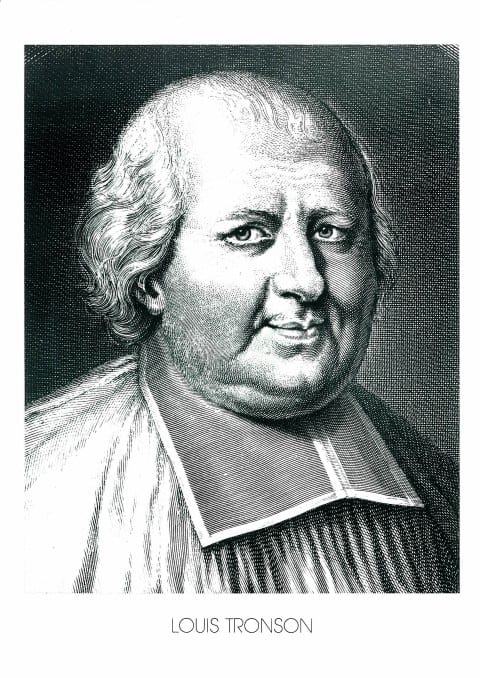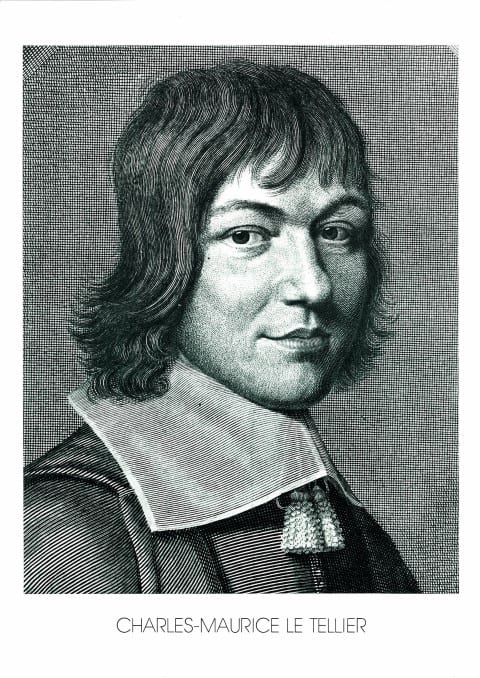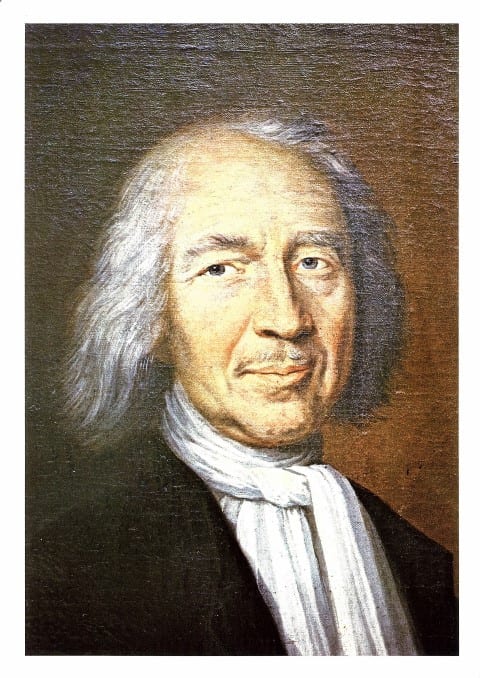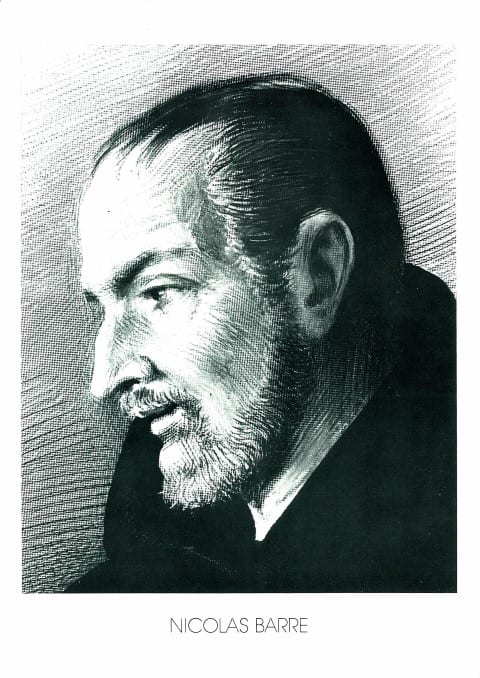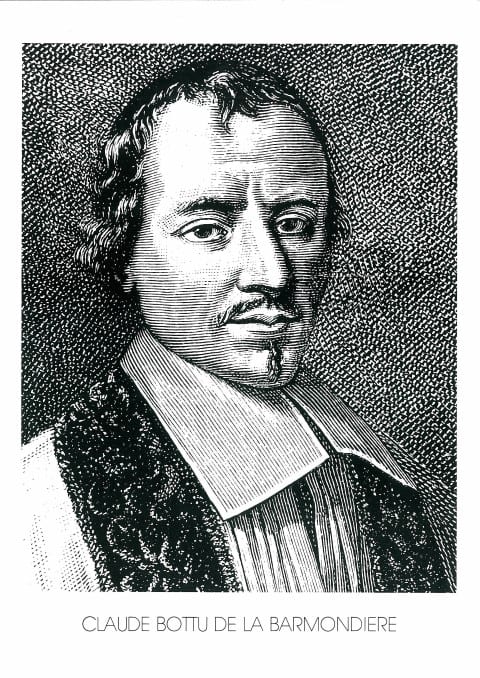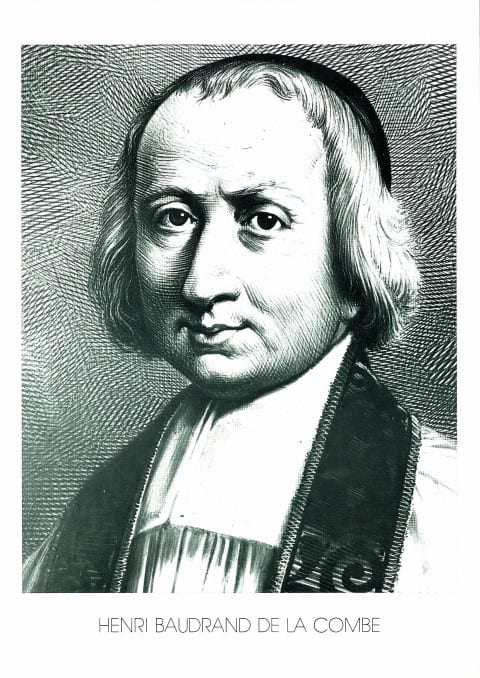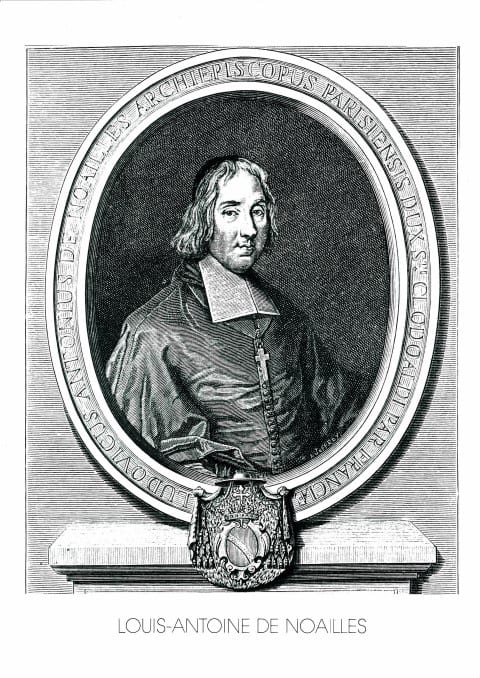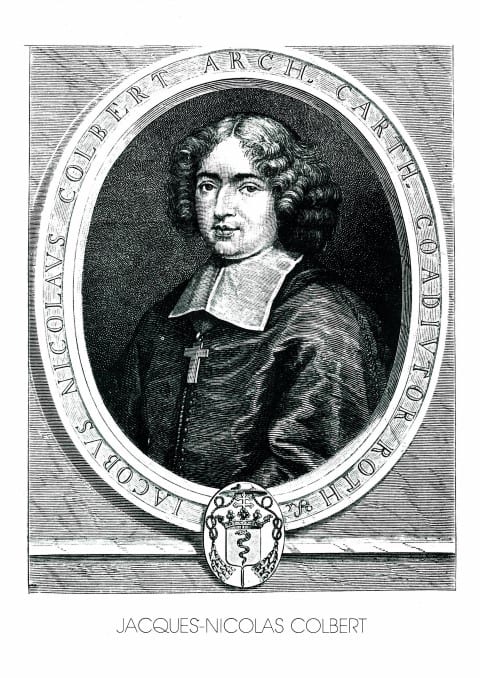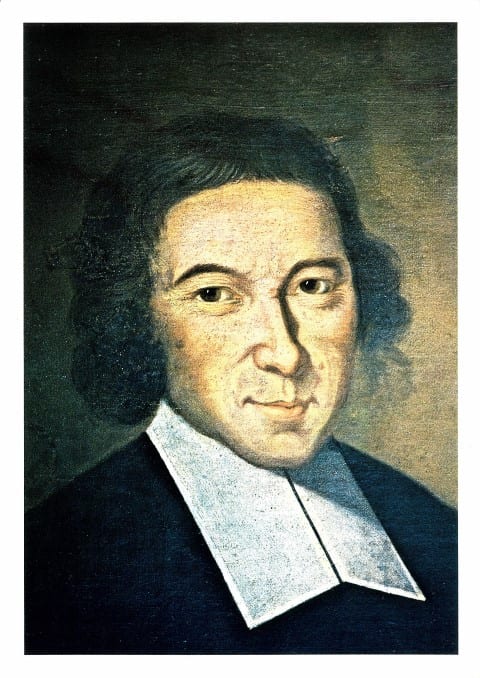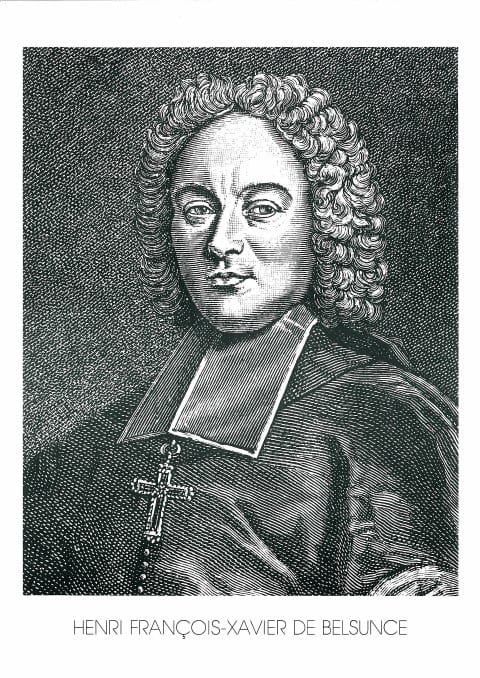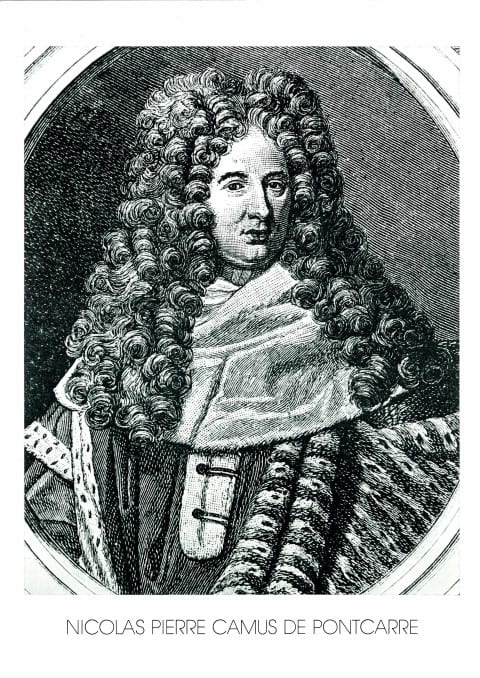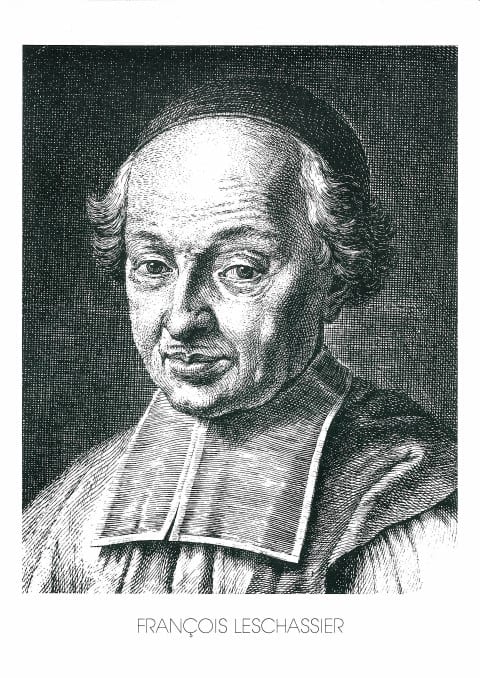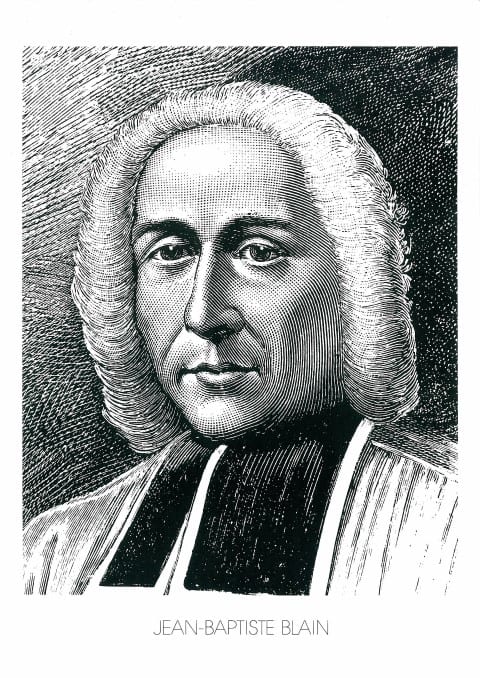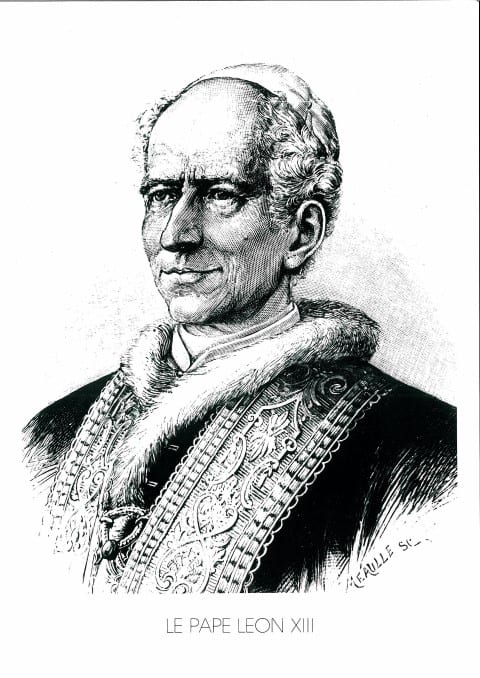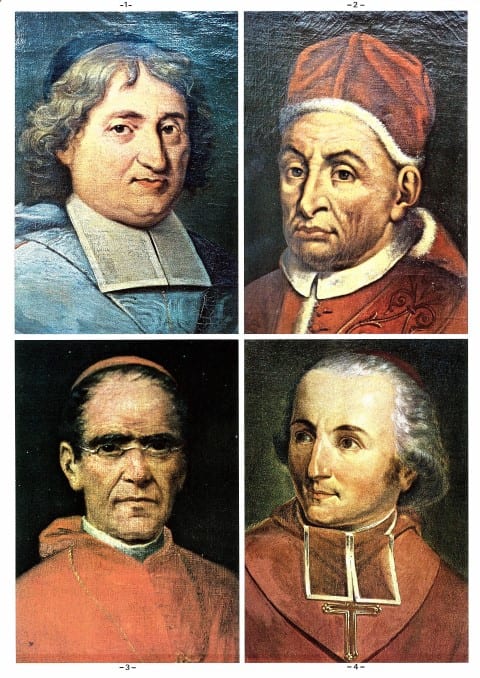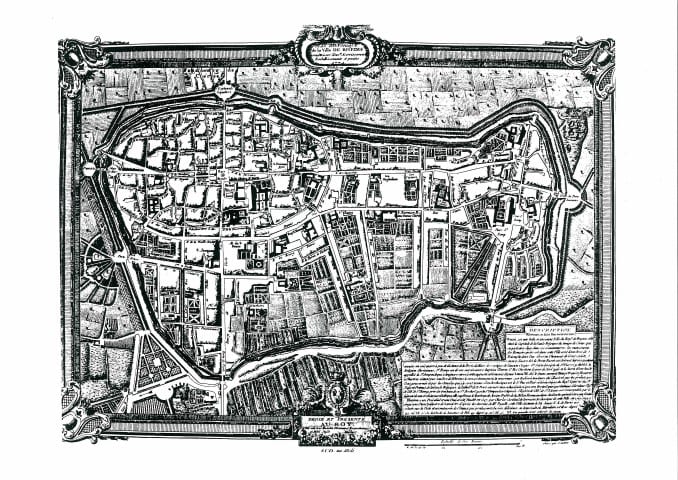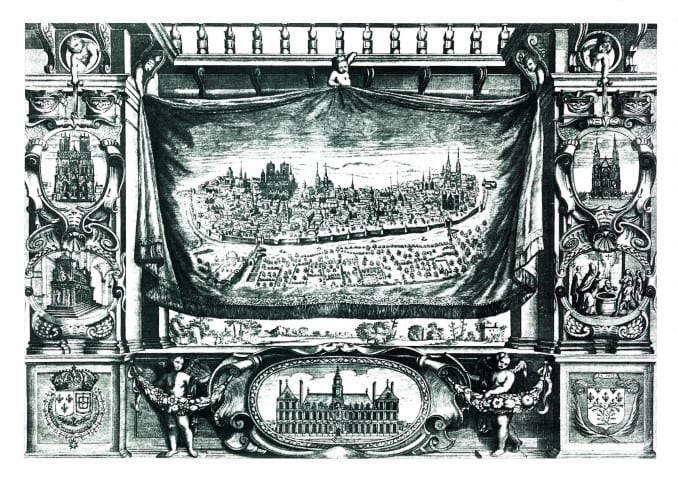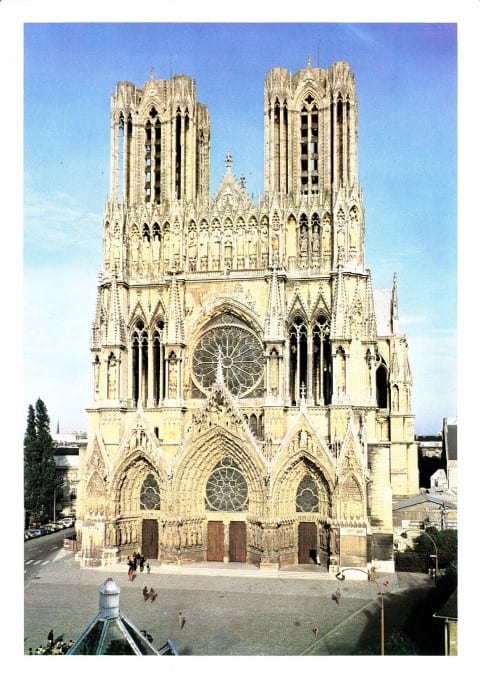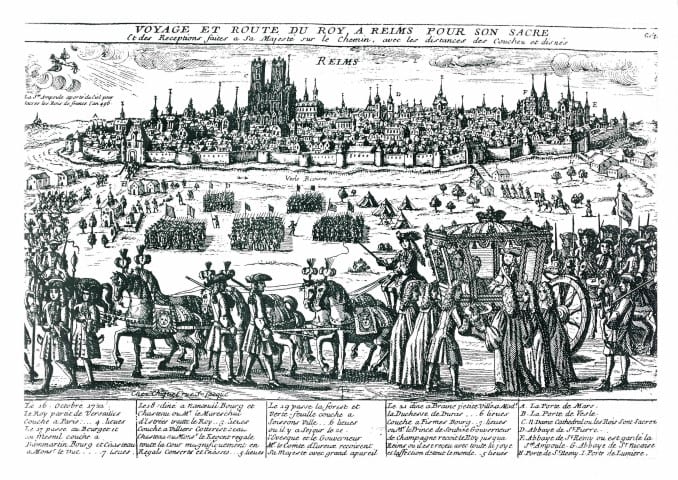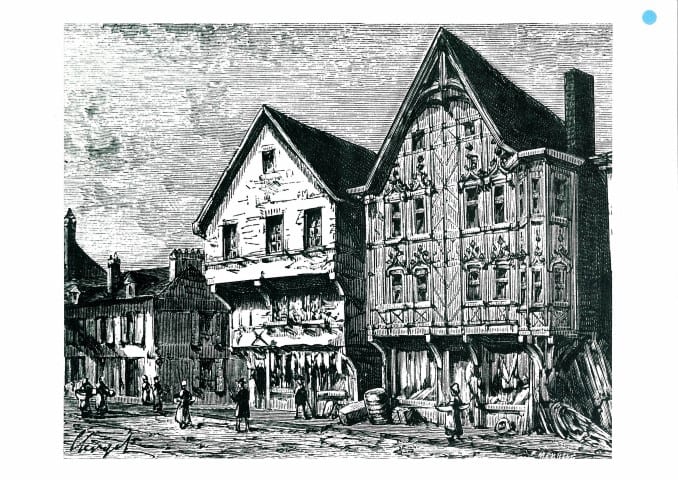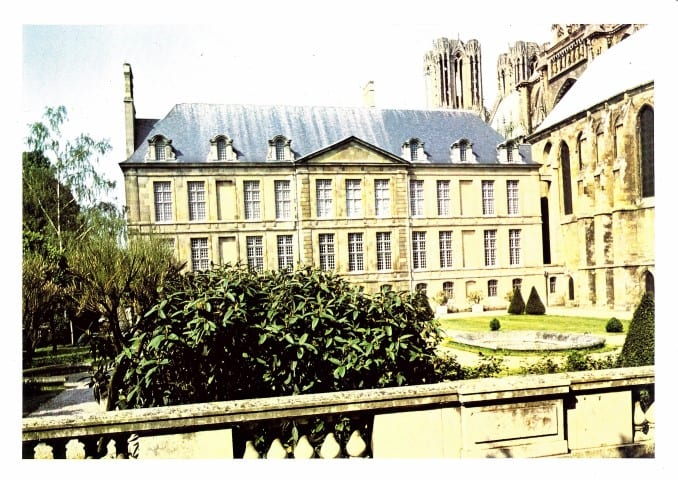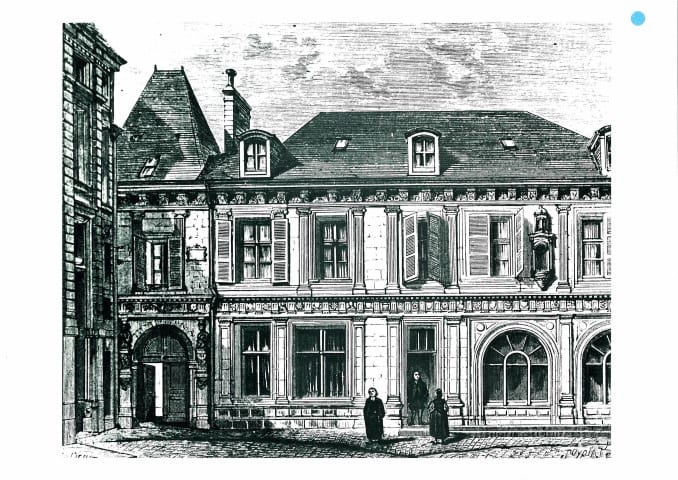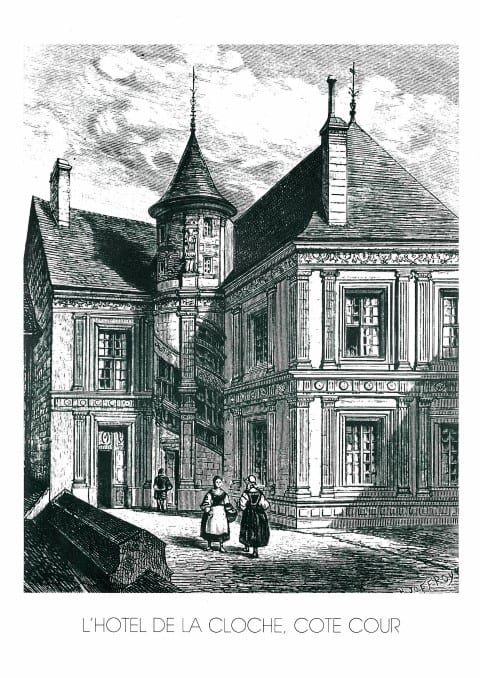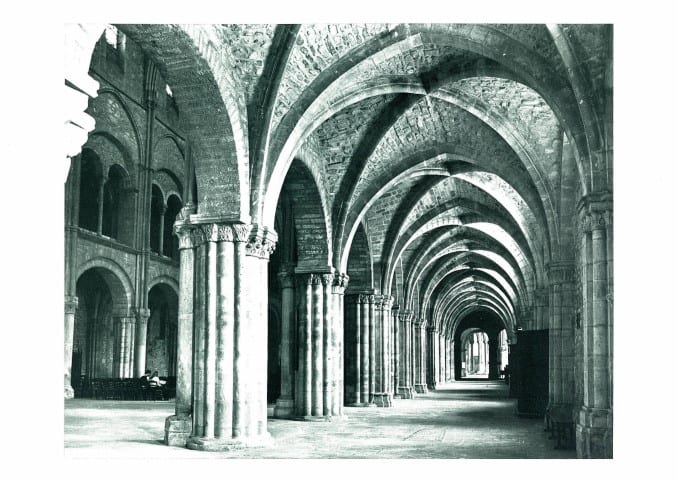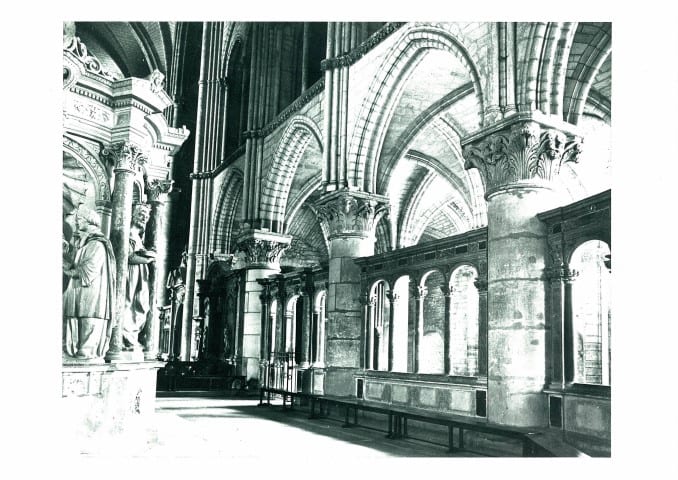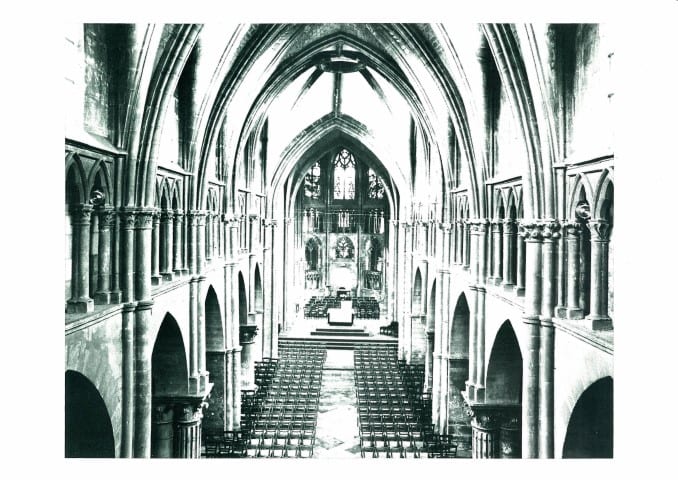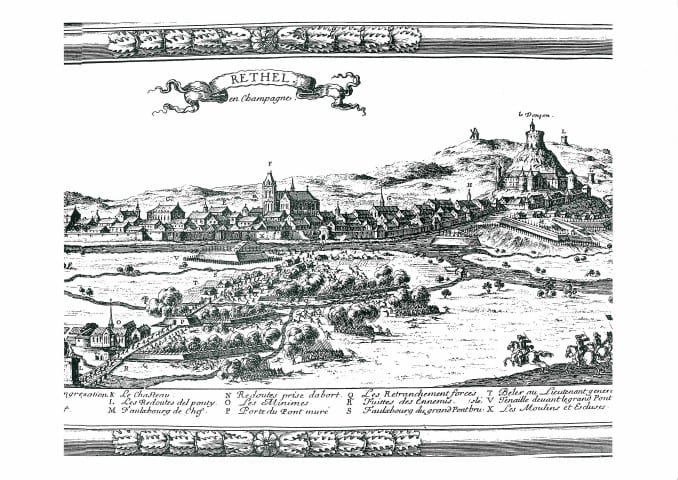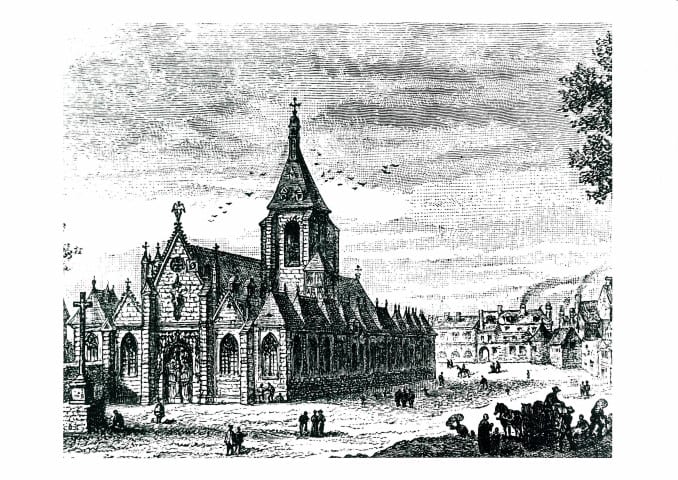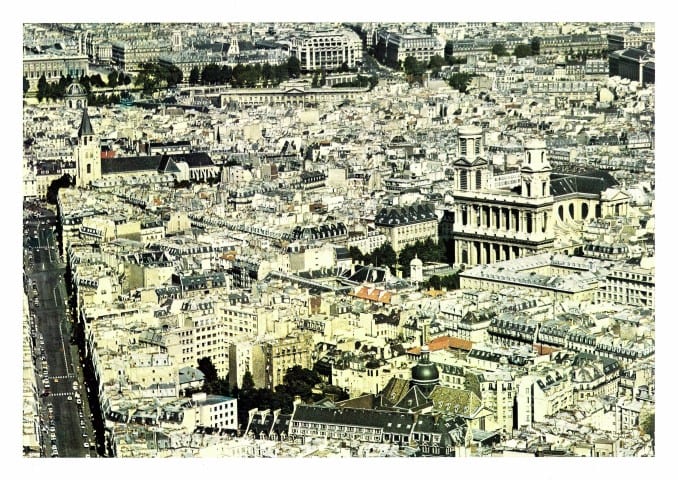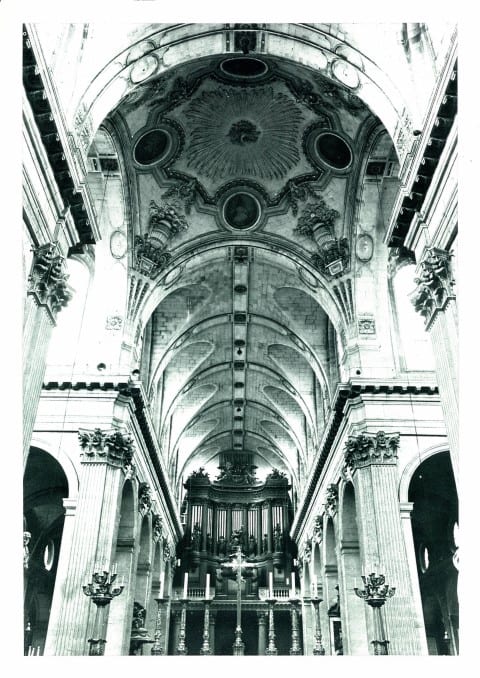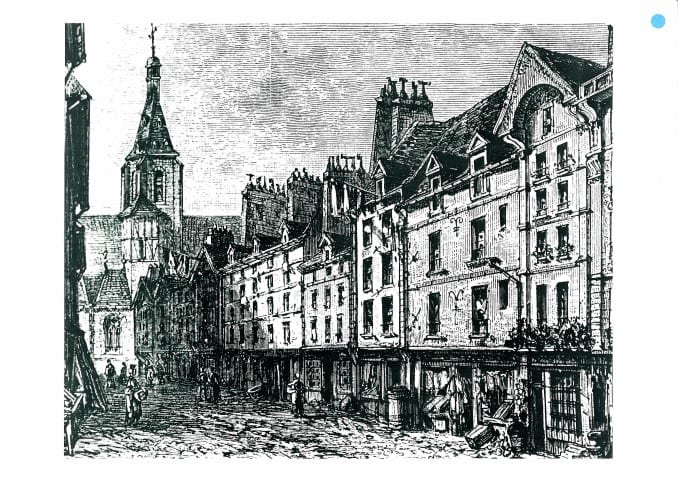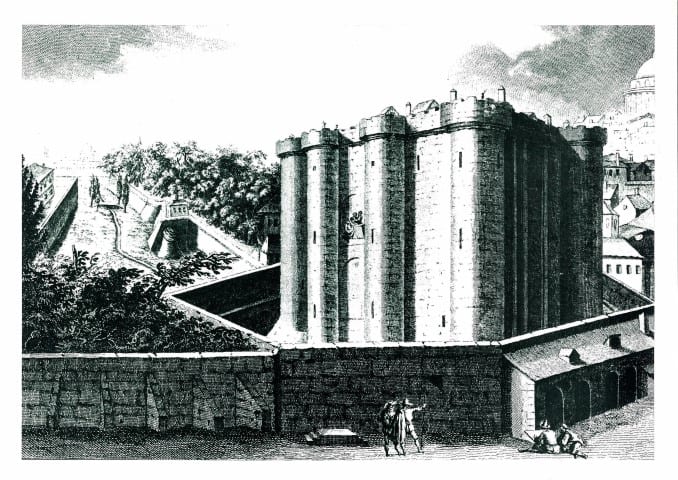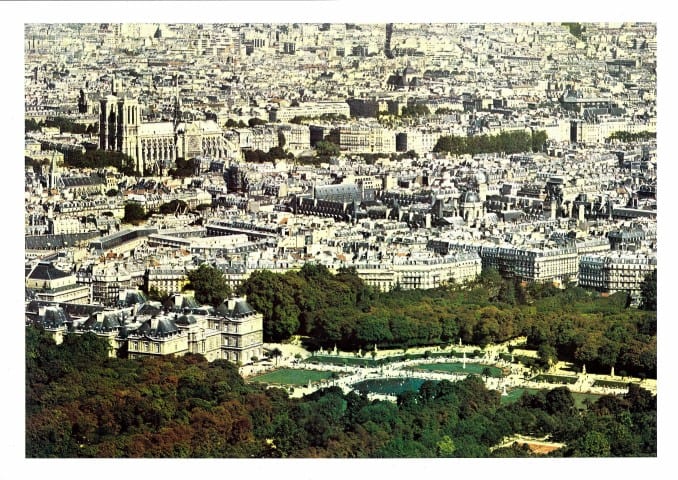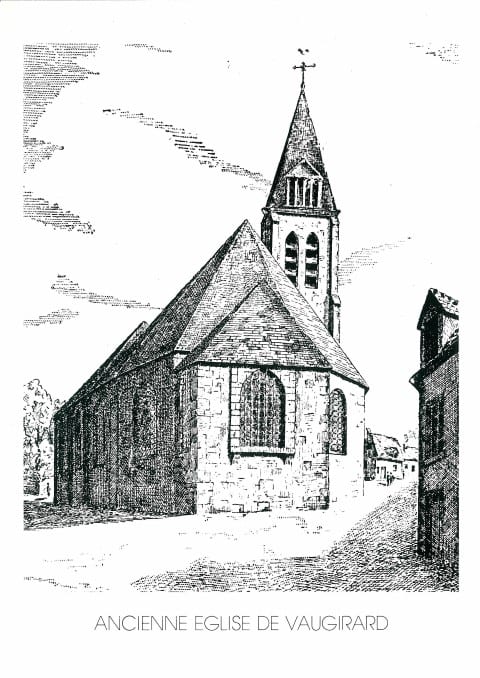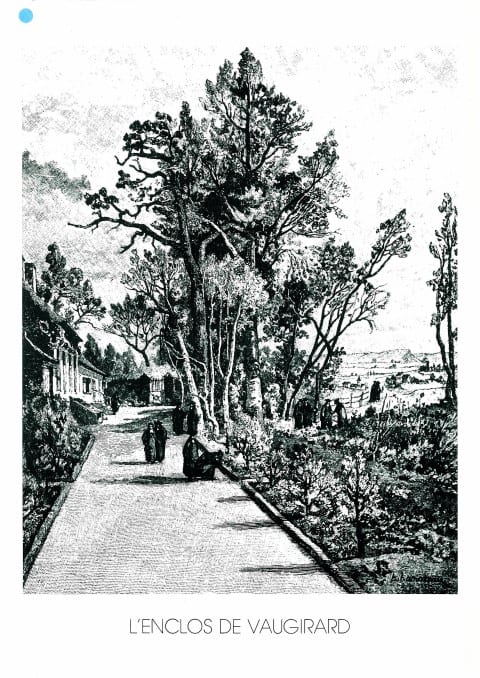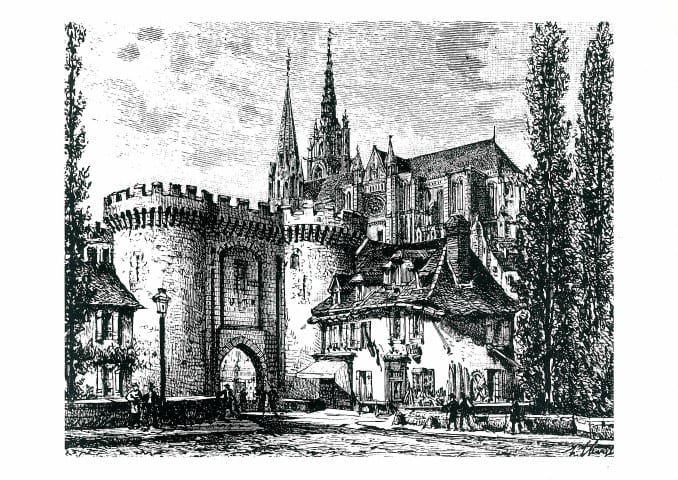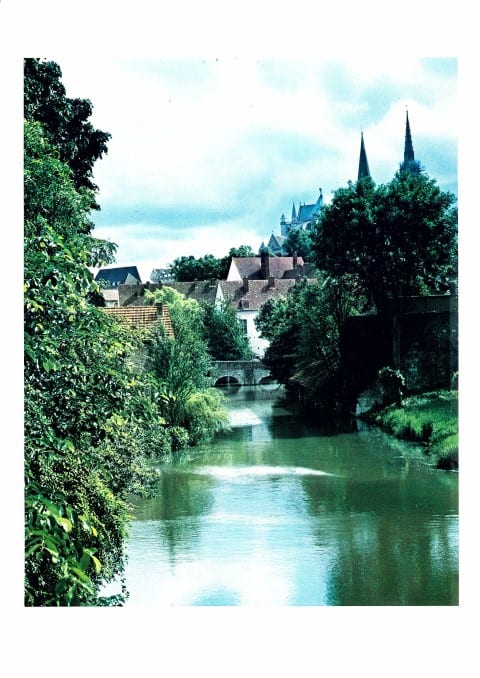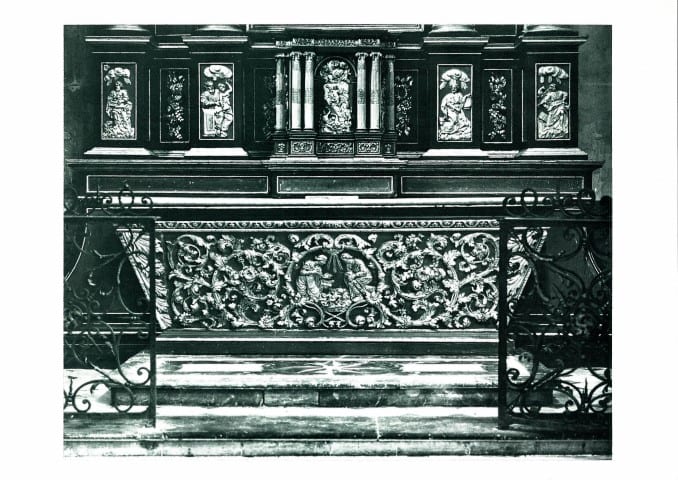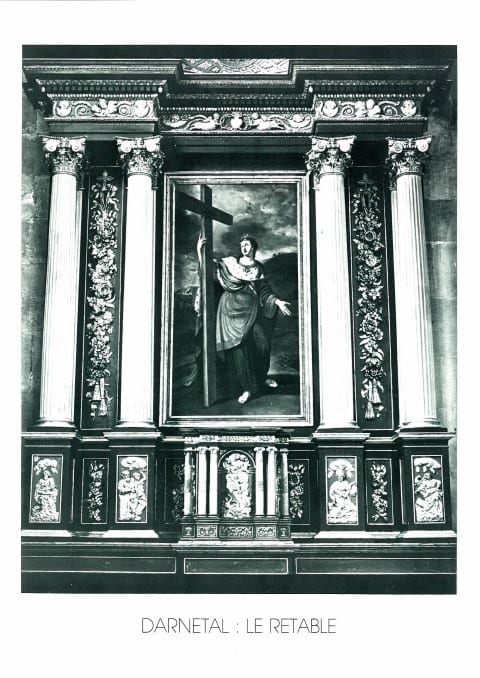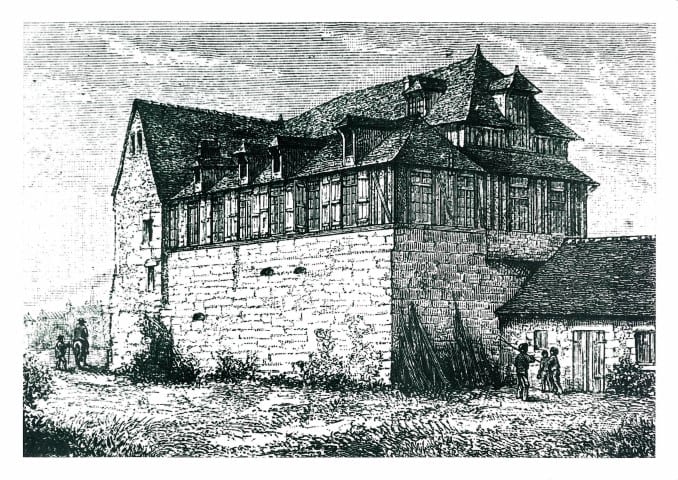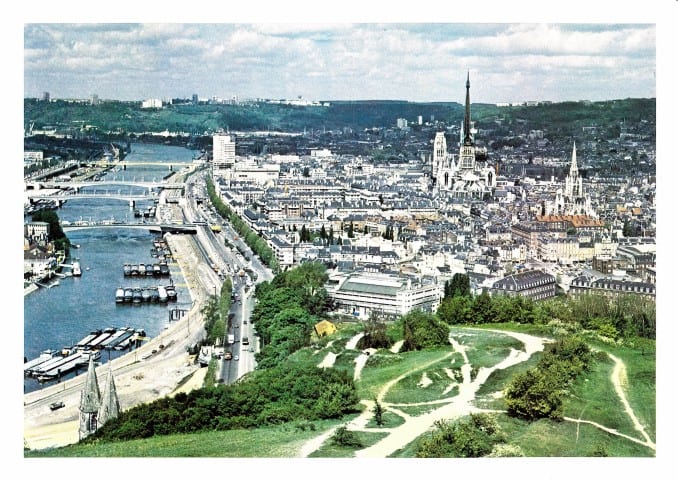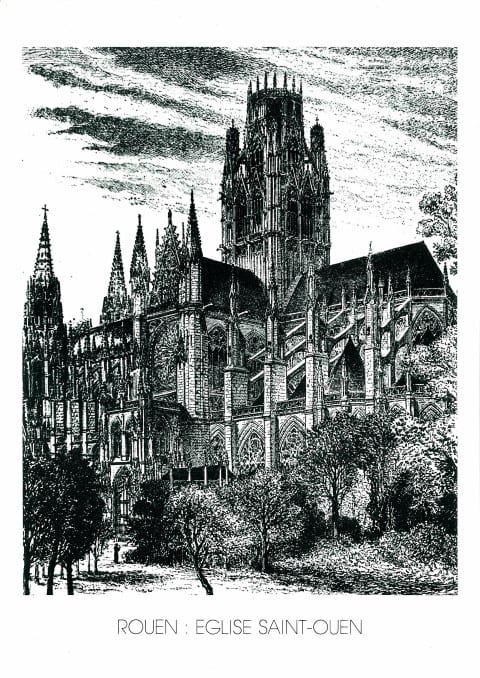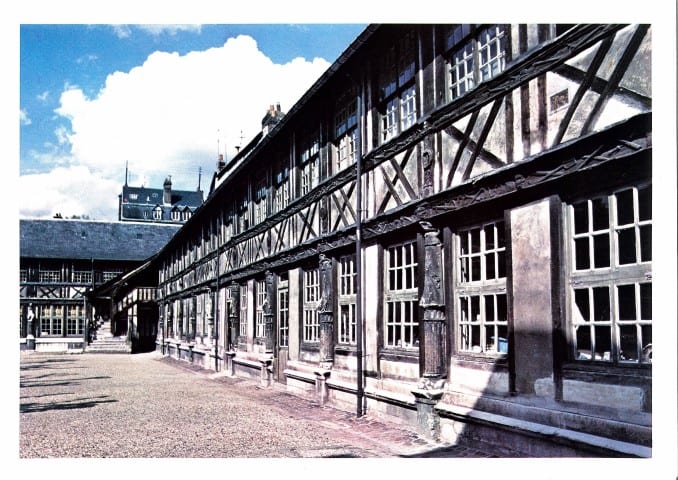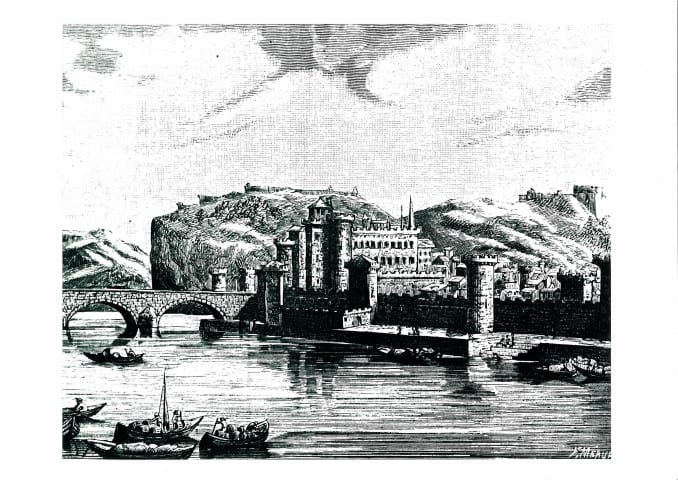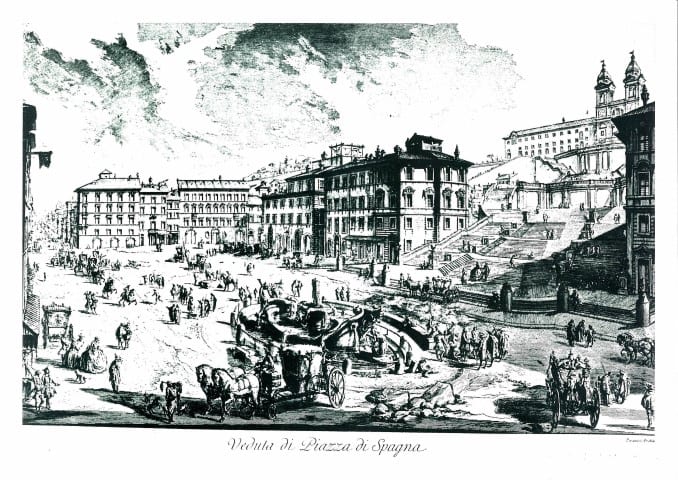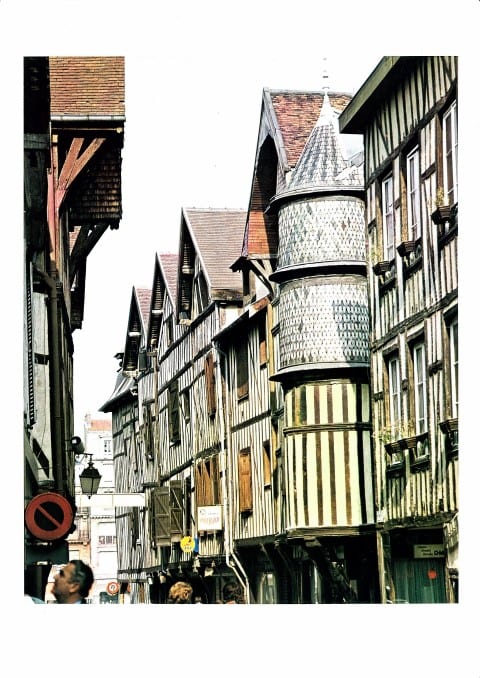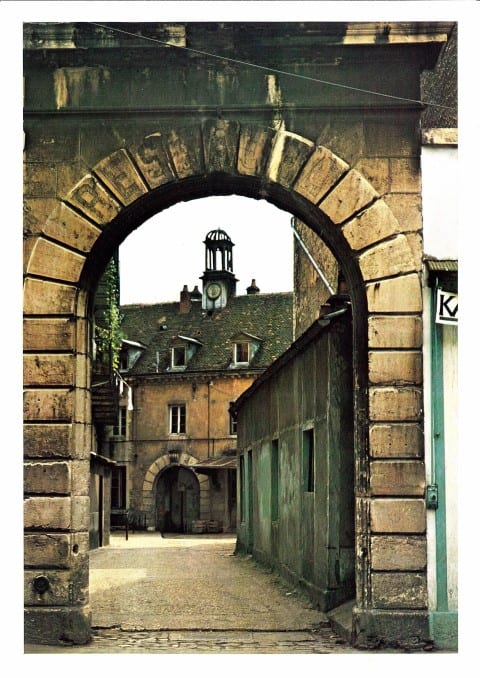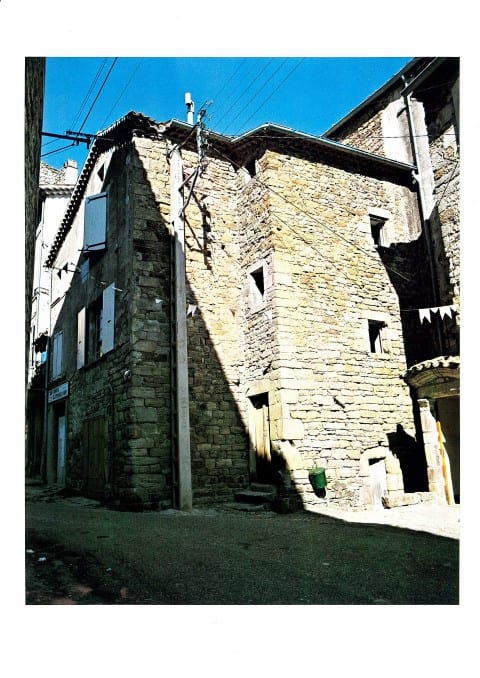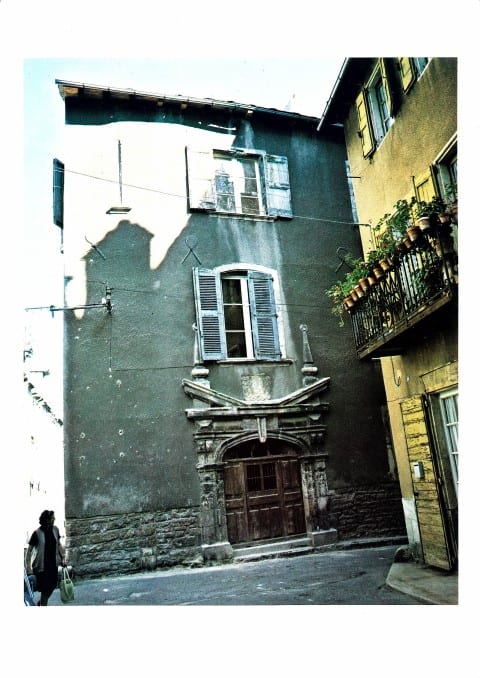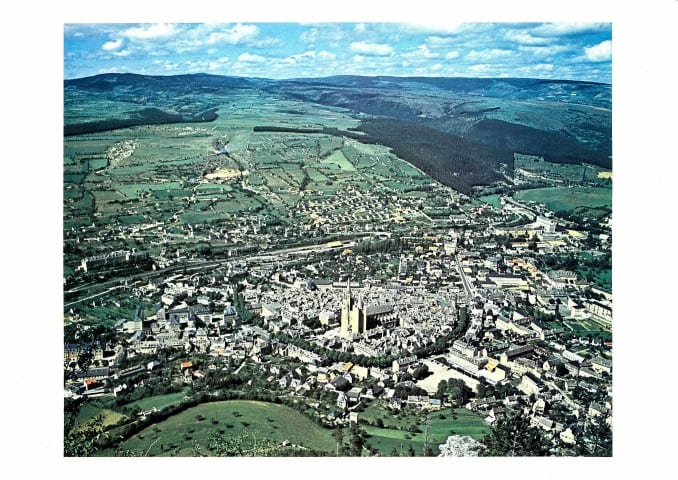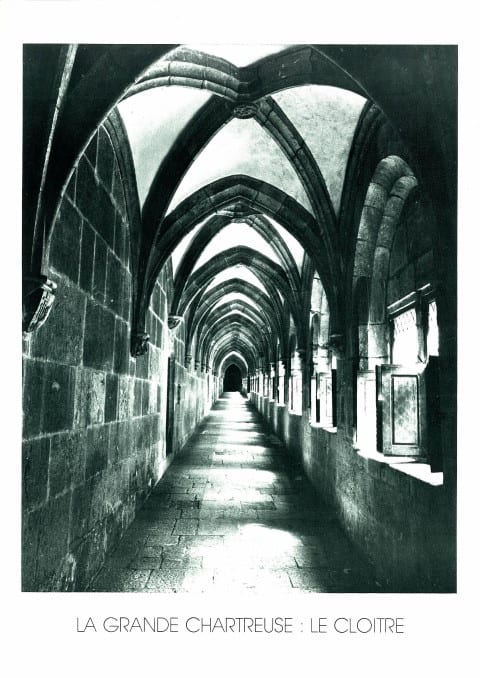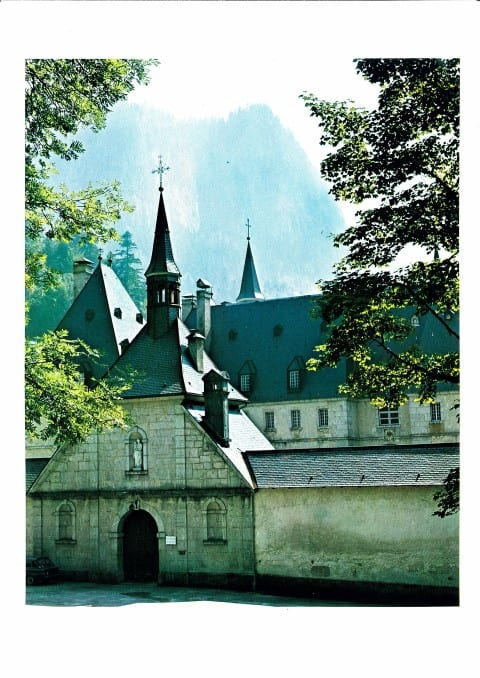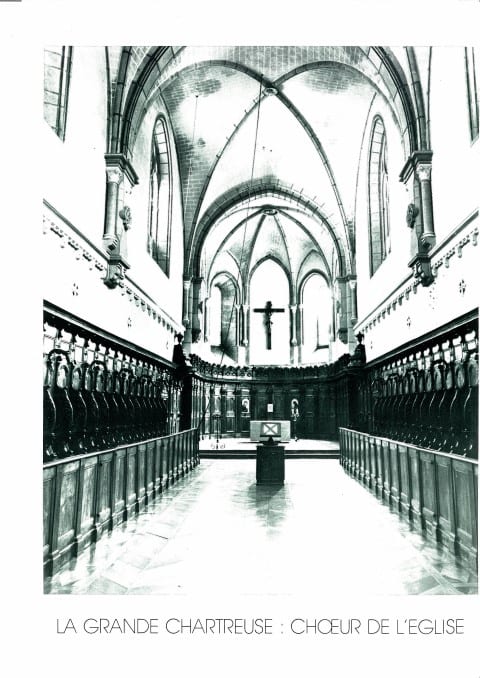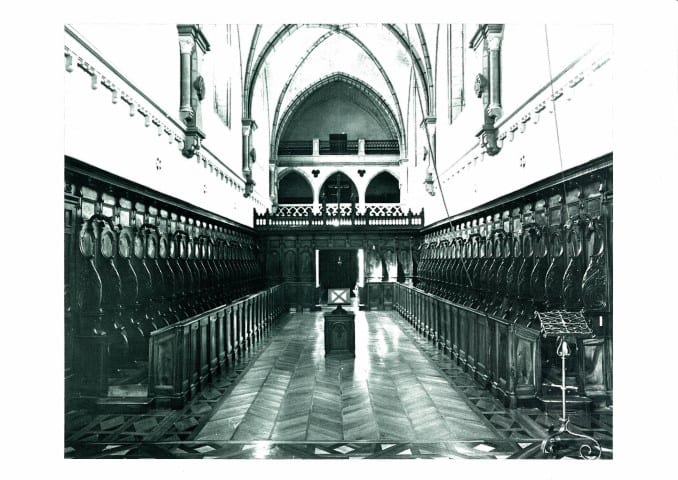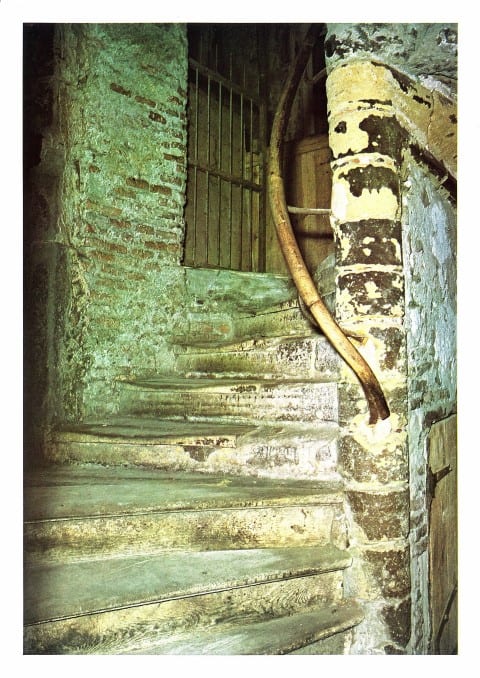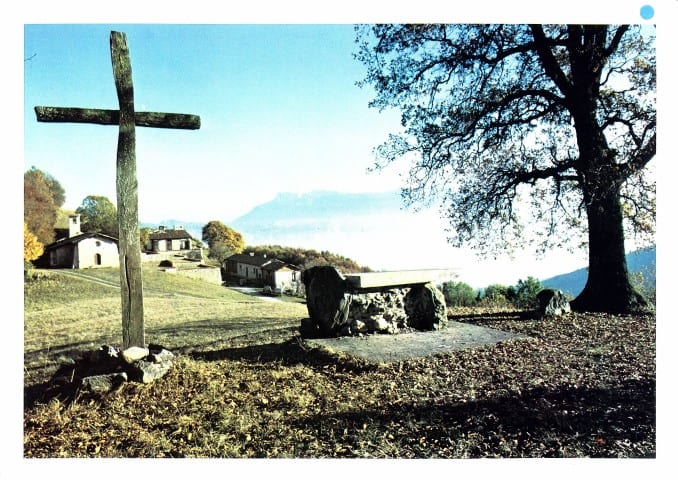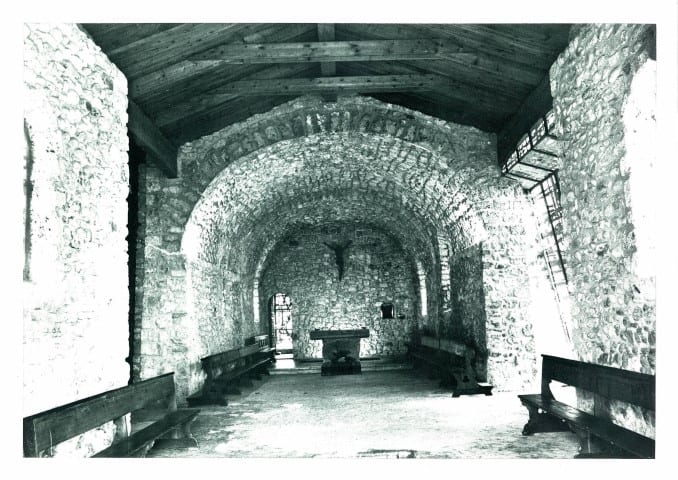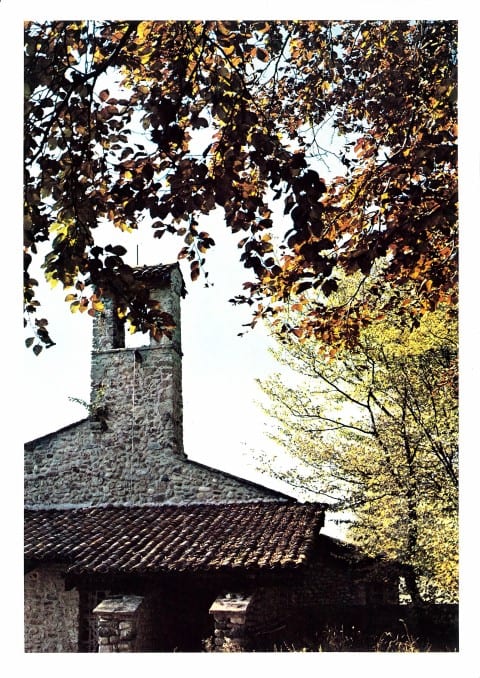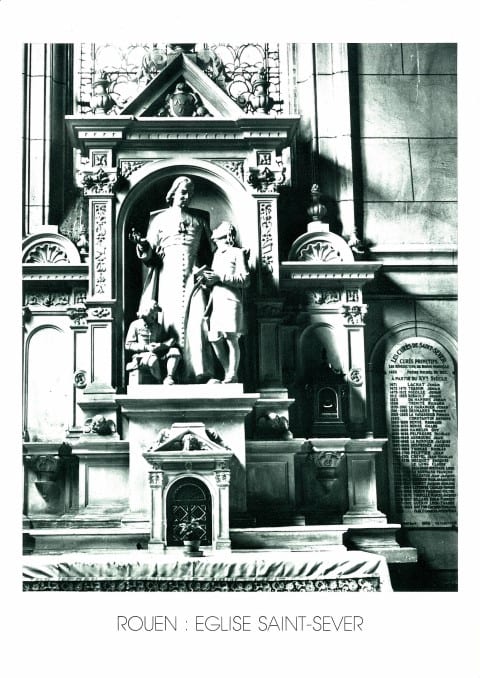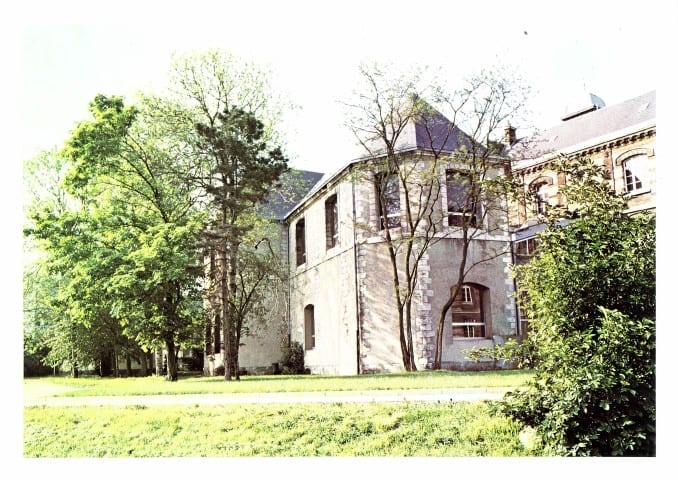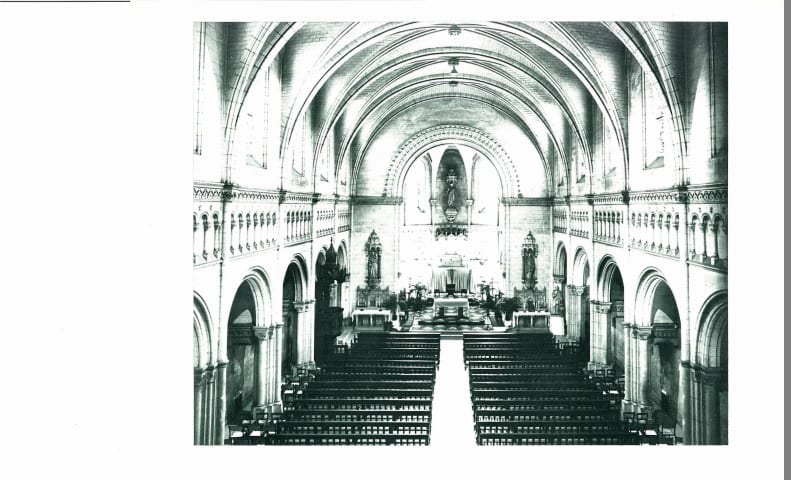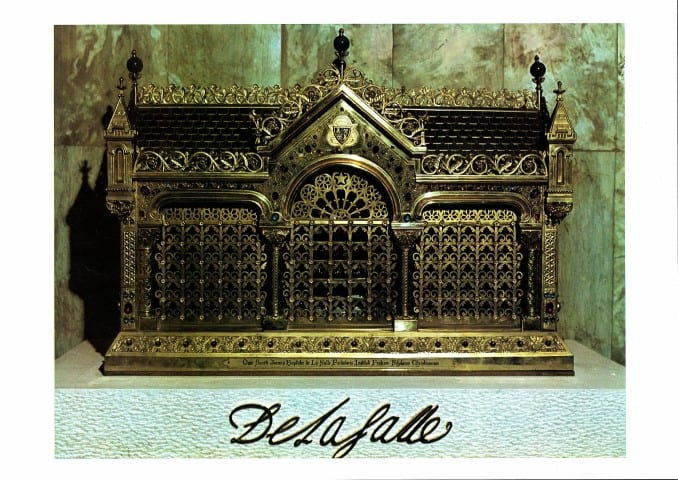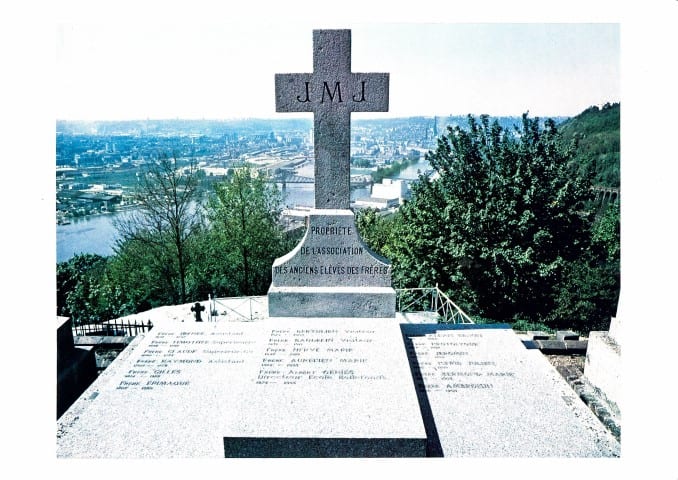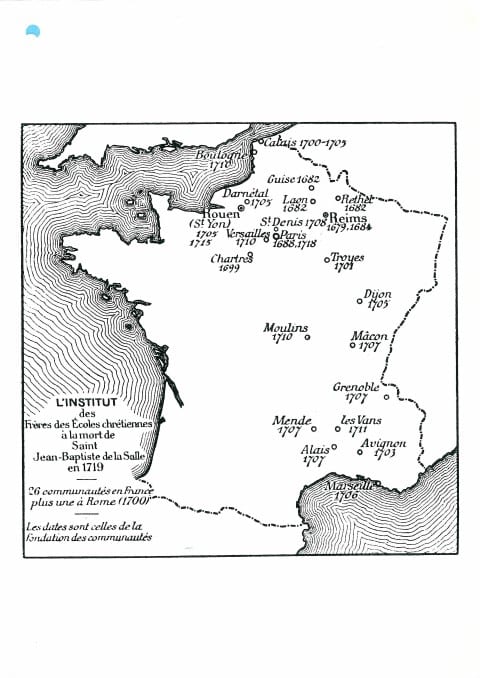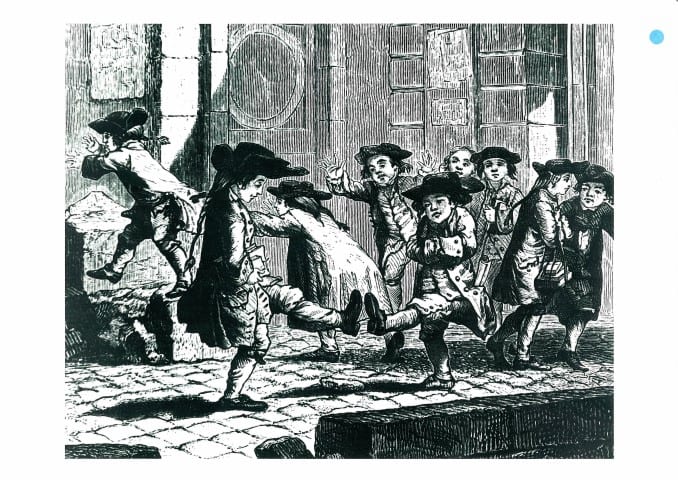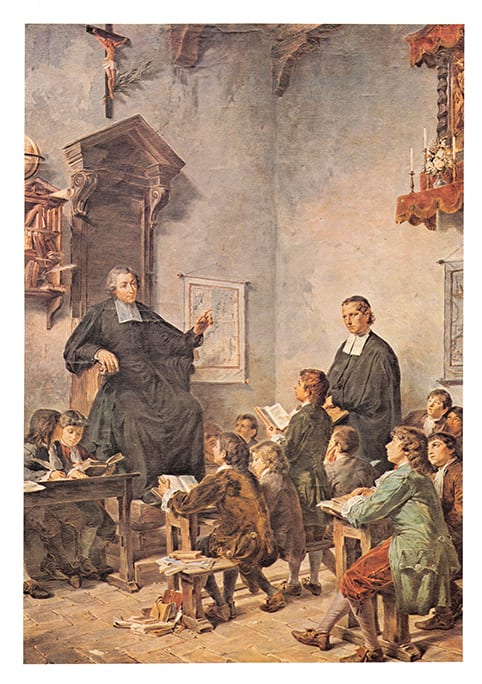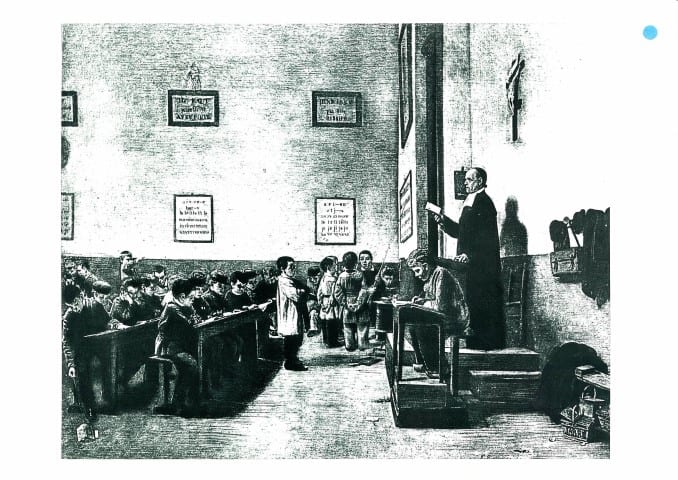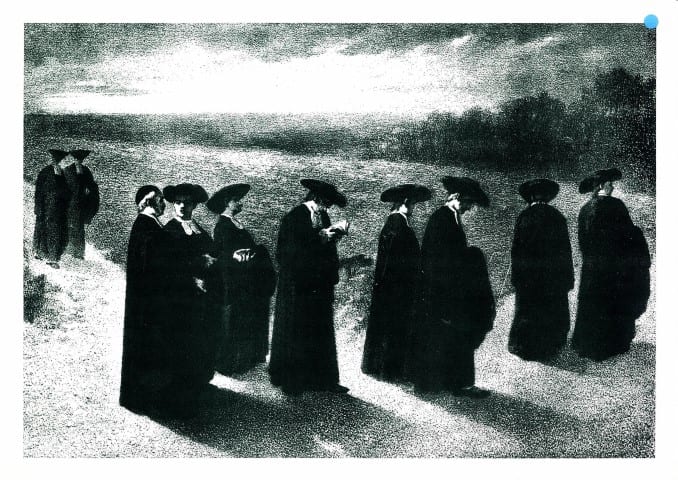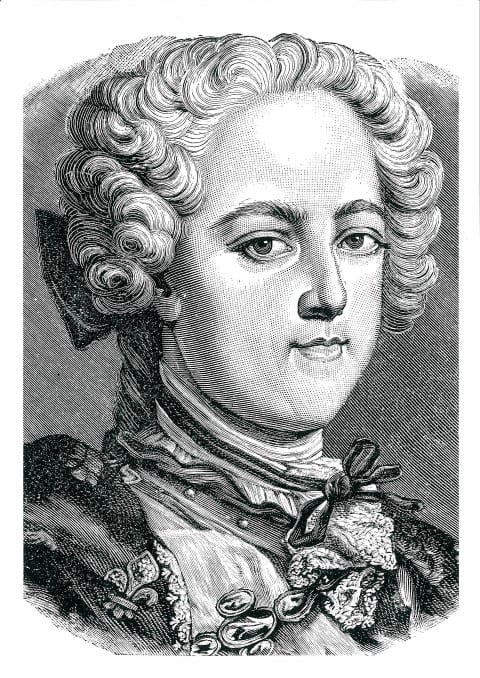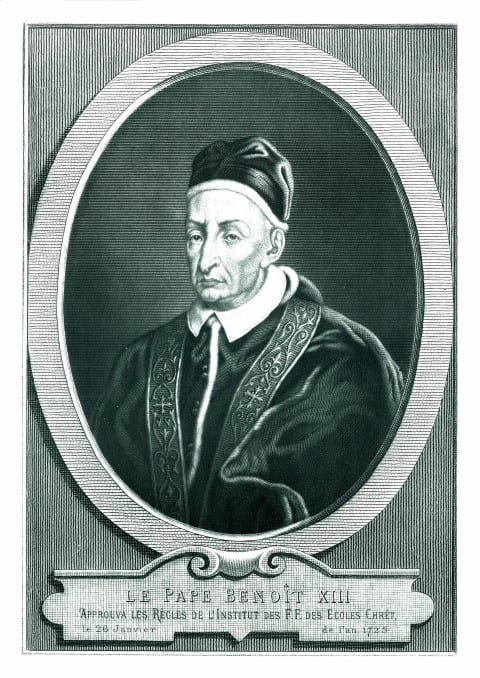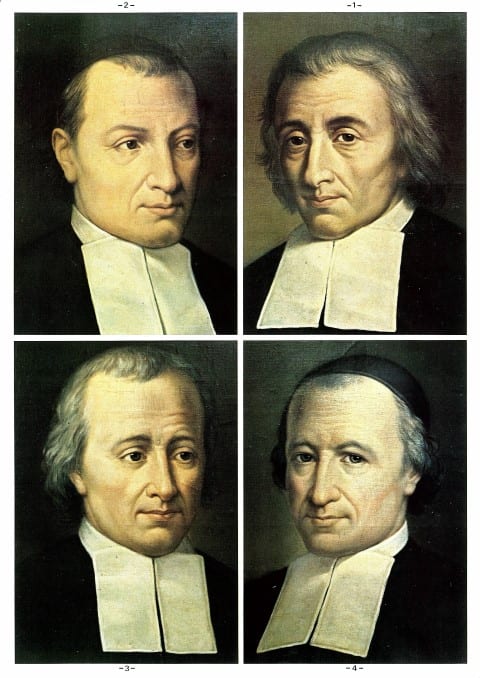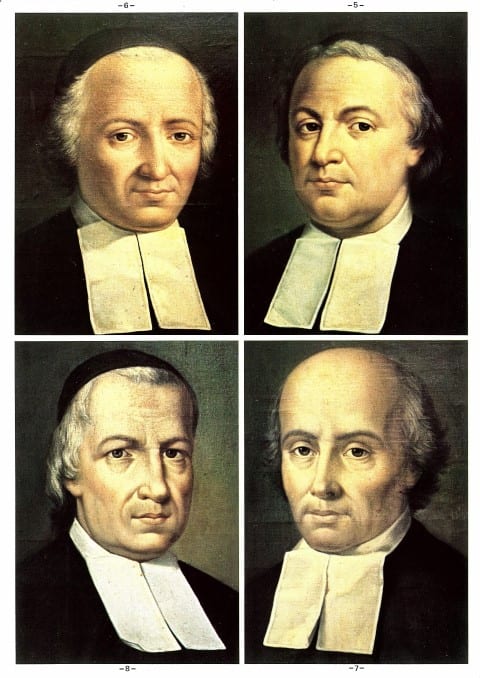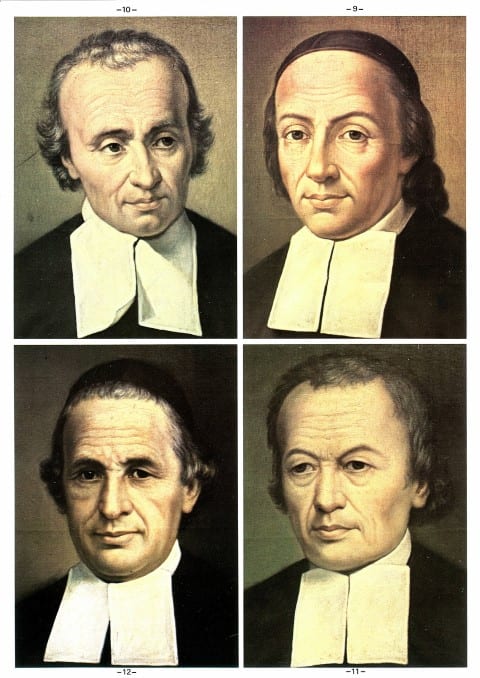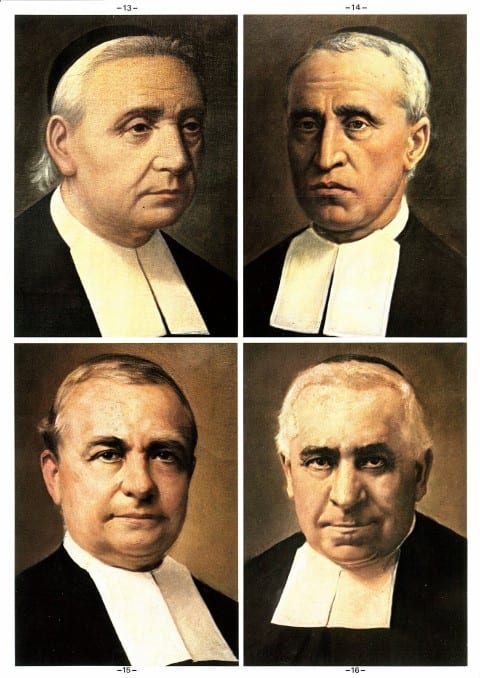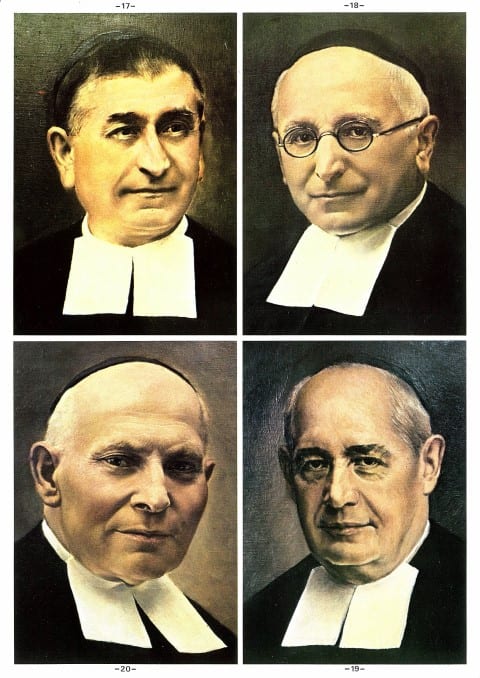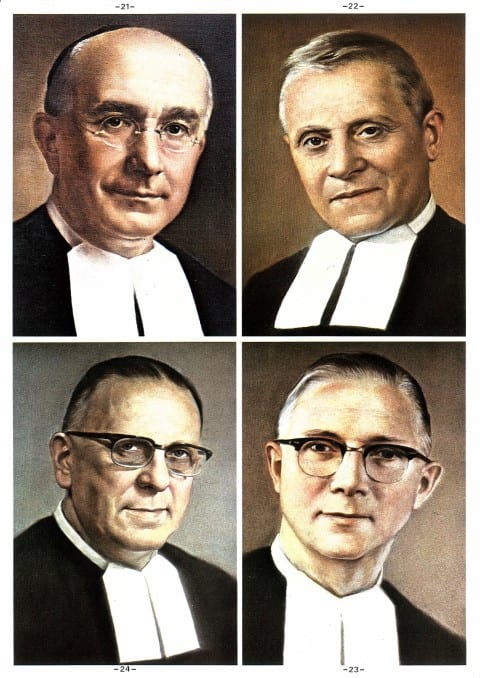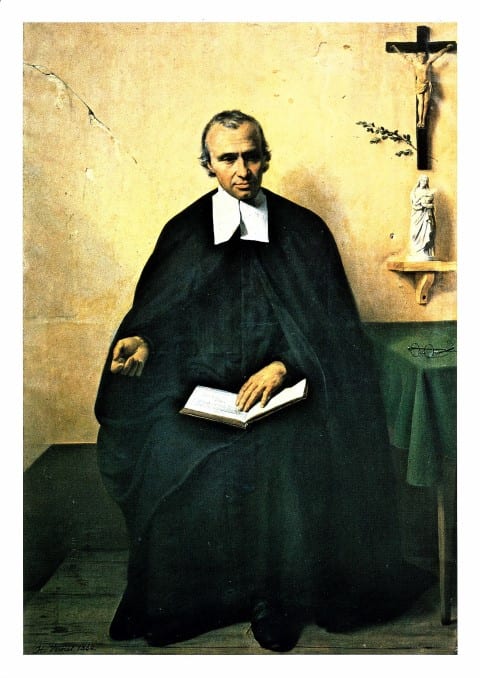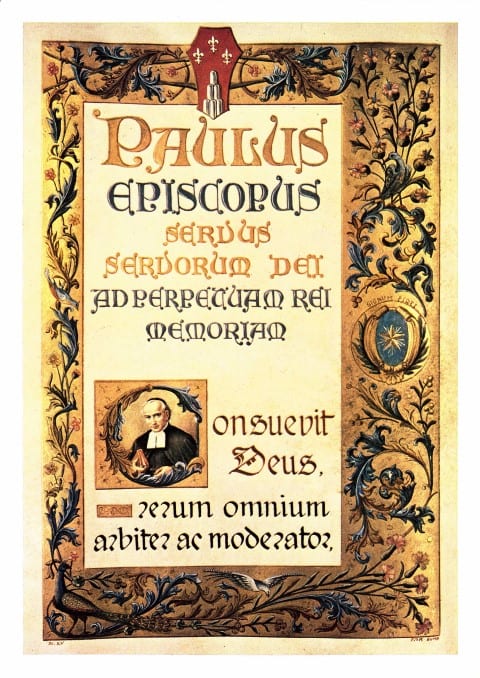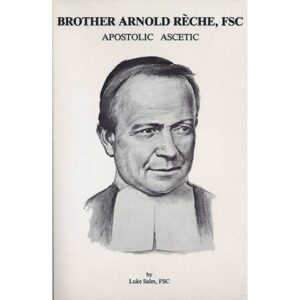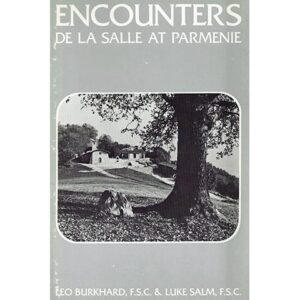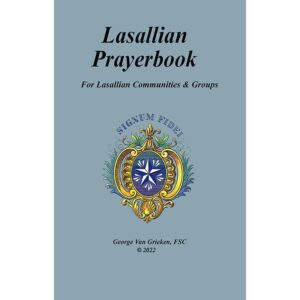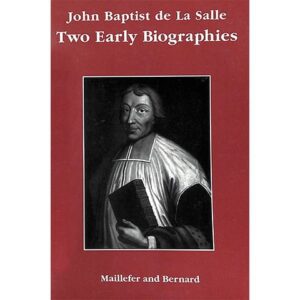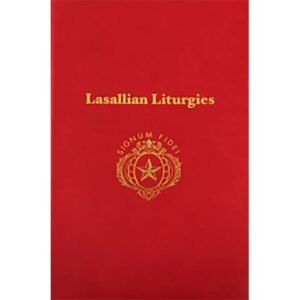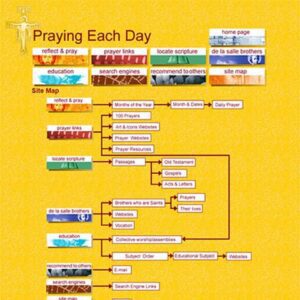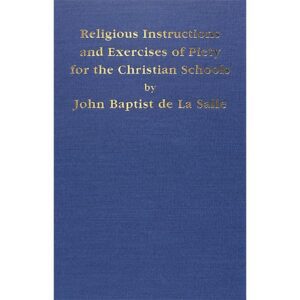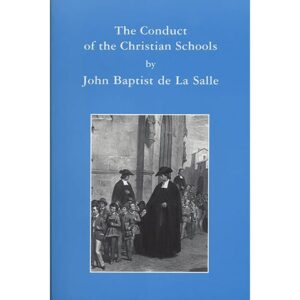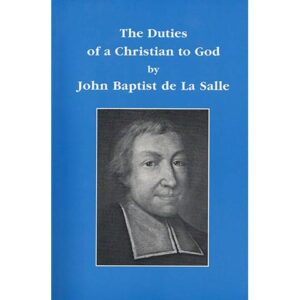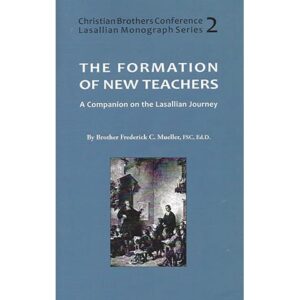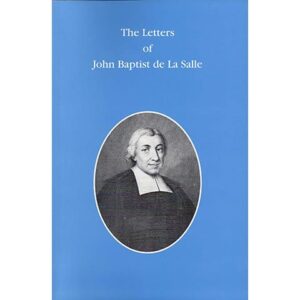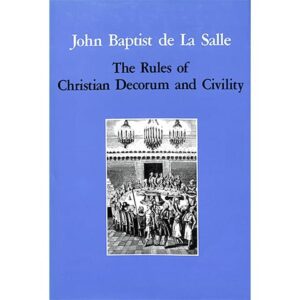Description
Each of the images below may be downloaded by clicking on the image,
or by choosing either of the formats provided (JPG or PDF)
- John Baptist DE LA SALLE: work painted by Pierre Léger, most likely the second such work. It is currently preserved in the Archives of the Generalate. Dated 1734, it has been adopted as the official portrait of the Founder. It reminds us of Blain's description: "His face was always happy, tranquil, and imperturbable ... The image of kindness that characterized him also produced a Jay among those around him". (Life by Blain, Book 4, p. 308).


- We can legitimately claim that this painting faithfully reproduces the traits of the Founder. ln effect, the Brothers who had known him well chose this for inclusion in the first edition of his "Life" by Blain in 1733. Jean-Baptiste Scotin produced this work from a first portrait painted by Léger, and which is now lost.


- A detail of the work By Scotin: It reminds us of the description of DE LA SALLE given by Maillefer: "(with) the head slightly inclined to the front, the broad forehead, the large well-proportioned nose, the clear blue eyes, the hair chestnut colored and curly". (Life by Maillefer, Cahier lasallien 6, p. 258). Note the vivacity, the penetrating look, the firmness of the .facial.features, which gradually become more noticeable in copies produced later on.


- John Baptist DE LA SALLE celebrates his first Mass, April JO, 1678, in the Lady chapel of Reims Cathedral, in the presence of his family and of Nicolas Roland who was to die a few days later (April 27). Painting in the church at Gravières (Ardèche, France) by one of the Brothers. Of little artistic value, it has at least the merit of being one of the few representations to include women together with the saint - in this case, his sisters. Painters have been even more selective in this respect than his biographers.


- John Baptist DE LA SALLE meets Adrien Nyel at the convent of the Sisters of the Child Jesus, Rue du Barbâtre, Reims (before March 15, 1679). Painting from Gerlier's engraving in Gaveau's 1886 Life of the Founder. Of little artistic merit, it is nevertheless the only representation of the event which was to change the course of the life of Canon de La Salle.


- The Founder writing the Rules. This engraving by Chapon of the painting by Muller, 1887, observes the conventions common for illustrating the lives of the saints, and should not make us forget that before being put into their final form, these Rules were tested and discussed by the Brothers themselves.


- Peath of John Baptist DE LA SALLE, April 7 1719. Painting by Grellet, 1859, who has portrayed various members of the Institute: school Brothers, a serving Brother with a brown religious habit, some novices and postulants, besides a mysterious clerical figure in the doorway. Right up to his death, the Founder had misunderstandings with the pastor and the archbishop.


- Funeral of John Baptist DE LA SALLE, April 8 1719. Engraving by Trichon of a drawing by Garnier. The artists have somewhat exaggerated what actually happened, as Blain says: "He was buried without pomp in Saint Suzanna's chapel in the church of Saint-Sever on Holy Saturday afternoon in the presence of a great crowd of people who attended his funeral".


- On Good Friday, April 7 1719, Du Phly painted the portrait of John Baptist DE LA SALLE, who had died early that morning. It is the only portrait we are sure was painted with the Founder's features before the artists. Unfortunately, this painting was lost in 1905 when the motherhouse was transferred, and we now have only two photographs of it, both in poor condition.


- Portrait called "Rue de Sèvres" because it was discovered in the community there, in 1956. Specialists who have studied it affirm that it goes back to the beginning of the 18th century, but cannot go so far as to affirm that the person portrayed is certainly John Baptist DE LA SALLE, in spite of certain analogies with the portrait by Pierre Léger.


- John Baptist DE LA SALLE: statue by Aureli in the Basilica of Saint Peter at Rome. Sorne five metres in height and weighing twenty-three tons, it was produced from a block of marble that weighed more than a hundred tons! The Founder instructing two children standing near him is presented in a classic manner.


- July 27, 1671: John Baptist DE LA SALLE is a student of Theology in Paris and is following courses at the Sorbonne.The first is an attestation of assiduity in his studies for a course on the mystery of the Holy Trinity. It is in the Founder's own hand and signed by the professor and several students acting as witnesses. The second photo is another attestation from the same date for a course on the mystery of the Incarnation.


- First Document: October 16, /682: authority granted to DE LA SALLE to give absolution in special circumstances. During this period, though very much involved in the work of our foundation, nevertheless he continues to exercise an aposto!ate on behalf of persons who obstinately refused the grace of conversion.
Second Document: December 22, 1678: Authority is given to John Baptist DE LA SALLE to receive the act of abjuration from heresy of Suzanne Périeux. The Saint had been ordained in January of that same year. His biographers tell us that he would seek out opportunities of carrying out an apostolate that was more direct than that involved in his being a titular canon.


- Manuscript dated March 9, 1713. The Rule of 1718 had been preceded by numerous drafts which demonstrated a remarkable continuity and growth of the thought contained therein. This work is an example ol such a draft, the contents of which date back to the Reims period, in the early stages of the foundation of the Institute.


- 1689-1690: The "Memoir on the Habit." The pastor of Saint-Sulpice wants to change the Habit of the Brothers. John Baptist DE LA SALLE writes a memoir to affïrm, through the Habit as a symbol, the specificity of his Community of teaching masters. Herein is contained the first overall description of the young Institute, written personally by the Founder. It remains one of our most precious archival treasures.


- This plate brings together the authentic signatures of the three people - John Baptist DE LA SALLE, Nicolas Vuyart and Gabriel Dro/in - who made the "heroic vow" of November 21, 1691 (the original is lost). They promised by a vow of association and union to establish the Society of the Christian Schools "Eve if we are the only three left in the said society and even if we are obliged to ask for alms and to live on bread alone."


- 1694: Meeting of the "principal" Brothers at Paris (Vaugirard) from May 30 through June 6. Approval of the Rule, and then on June 6, the pronouncing of vows. On June 7, the election of the Founder as Superior of the Society was made. This representation shows the end of the election and the affixing of signatures in witness thereof, by the Founder's companions.


- Painting by Giovanni Gagliardi, 1901. The first school of the Brothers in Paris was that of the Rue Princesse in the parish of Saint Sulpice. The pastor, M. de La Chetardye, is shown here visiting the school. This man of great qualities had very strained relations with the Founder whom he first supported and then opposed. He had a strong tendency to meddle in the internal affairs of the Institute.


- Letter dated November 18, 1705, written by John Baptist DE LA SALLE to M. des Hayes of Rouen and dealing with the opening of a school at Darnétal near Rouen. It gives an insight into one of the Founder's essential activities, the founding of schools, and shows the administrative acumen he brought to the task.


- This plate is a reconstruction from different documents of the authentic signatures of those who signed the famous letter of April 1, 1714. The Founder had passed through a real "night of the soul" pondering the meaning of his mission with the Brothers. For two years he had been living with them in the South of France. The Institute was again in danger and so the principal Brothers sent him this letter, requesting him in the name of the vow of obedience that he had made to return to resume the direction of affairs. A miracle of grace, and of brotherly solidarity, he obeys.


- Painting by Giovanni Gagliardi, 1905: Visit to Saint-Yon of the Archbishop of Rouen, son of Louis XIV's minister Colbert, accompanied by Pontcarré, president of the Normandy parliament. The Brothers had been at Saint Yon on the outskirts of Rouen since 1705, and it housed the novitiate, a boarding school and an establishment for delinquents. The Saint spent the fast years of his life there, the motherhouse of the Brothers.


- Brother Barthélemy receives authority to visit the houses of the Institute (December 4, 1716) and to prepare for a genera! Assembly. The text bears the signature of the Founder and that of Jean-Baptiste Blain. Since 1712, the latter had been named ecclesiastical Superior of the Brothers, a charge which he carried out with great prudence and discretion until the Brothers were granted the Bull of Approbation


- The Rule of the Brothers of the Christian Schools - 1718: During the period of the early development of the Institute, the Founder and his Brothers integrated into its pages the fruit of their spiritual and apostolic experience. We possess two drafts, this being one of them, and which the Founder himself re-examined for the last time during the period of months between the Chapter of 1717 and his death.


- Top - Obedience dated November 16, 1711, the fast of three addressed to Brother Joseph, who from 1708 was commissioned to visit a certain number of houses of the Institute. One can see here the appearance of the function of "Visitor", a fundamental aspect of the Institute of the Brothers.
Bottom - August 11, 1718: John Baptist DE LA SALLE gives all his books to Brother Barthélemy, Superior General. Blain tells us that the Founder had his library transferred from Paris to Saint Yon, a library that was "fairly well stocked with books."


- June 12, 1718: Joint act of renewal of perpetual vows of association, stability and of obedience by Saint John Baptist de La Salle and seven other Brothers. DE LA SALLE is designated as "Priest and founder of the Brothers of the Christian Schools, serving at the chapel of the said house of Saint-Yon". He affixes his signature thereto, after that of Brother Barthélemy, Superior General. This was his last renewal of vows before his death, a renewal of a commitment that he had never forsaken.


- November 14, 1718: Five months before his death, John Baptist DE LA SALLE entrusts to Brother Barthélemy, elected Superior General in the previous year, the ownership of the furniture of the house of Saint-Yon. We afso possess similar documents dealing with the properties of the Institute, his library, as also contracts and notarized acts. This text is in the Founder's own handwriting.


- Painting by Giovanni Gagliardi, 1906: The dying Founder gives his last blessing to the Brothers. Compare this with the painting by Grellet. Here everything is much gentler and the features and attitudes are serene. Grellet, however, is doubtless closer to the harsh reality. Before he died, John Baptist DE LA SALLE learned that he had been deprived of the exercise of his priestly powers in the diocese of Rouen.


- On May 24, 1900, at the start of the 20th Century, and during the Holy Year, Pope Leo XIII canonized Blessed John Baptist DE LA SALLÉ. Represented here is the Bull of Canonization (the lead seal after which this particular proclamation is called can be seen on the right). From this moment, devotion to the Saint spread throughout the world, recalling to one and all the vital attention that must be paid to children and youth.

- May 15, 1950: Two hundred and thirty-one years after his death, Pope Pius Xfl by a Brief; of' which this is a photograph, proclaims Saint John Baptist DE LA SALLE as "Patron of All Educators of Children and Adolescents." lt is since then that a true Lasallian family has developed, involving those persons who join the Brothers in their work, in a spirit of love and respect for the Saint.


- Gerson, 1363-1429, engraving by Trichon of a print in the Bibliothèque Nationale. This chancellor of the University of Paris,famous theologian and mystic, was greatly admired by John Baptist DE LA SALLE for his appreciation of the teaching vocation in favor of' the poor, which he valued so much that he practiced it himself.


- Adrien Bourdoise (1584-1655). Interest in Christian schools was considerable in ecclesiastical circles, influenced by the tridentine reform. In testimony to this concern, Adrien Bourdoise founded in 1649 a pious association to pray for Christian school masters. Two years later, John Baptist DE LA SALLE was to be born.


- Nicolas Roland, 1642-1678, painting at the Hôtel de La Salle, Reims. Canon of Reims and friend of John Baptist DE LA SALLE. He founded the congregation of the Sisters of the Child Jesus. Though many of Roland's friends had tried to interest DE LA SALLE in the work of education without success, Roland's own enthusiasm for the cause of education was to bear fruit in the work of the Founder of the Brothers and, as is often the case, the disciple was to outstrip the master.


- Louis XIV (1638-1715): This portrait engraved by Nanteuil from a painting by Mignard evokes the national, cultural and social milieu of the founding of the Institute. The Founder's early biographers tell us of the king's intervention in favor of the schools at Calais, Alais, Les Vans, Boulogne, Saint-Denis and Fontainebleau, and both Blain and Maillefer say that at his death the Institute lost a great protector, 'for His Majesty had always granted everything he had been asked for concerning the foundations of the Society."


- Jean-Jacques Olier (1608-1657): Pastor of Saint-Sulpice and founder of the Sulpicians. A leading figure in the spirituality movement of the 17th Century, since referred to as the "French School of Spirituality." The Founder was later to be a student of this seminary and his spirituality is largely inspired by that of Saint Sulpice.


- Alexandre le Ragois de Bretonvilliers, successor to M. Olier, was rector of the seminary during the period that John Baptist DE LA SALLE studied there. This representation recalls the considerable influence which the spirit and methods of Saint Sulpice exercised on the future Founder of a religious community.


- Louis Tronson (1622-1700): a leading figure at Saint-Sulpice, of which he later became the superior. As spiritual director of young John Baptist DE LA SALLE he continuously provided him with useful counsel. This, especially when the Founder came to establish the Brothers in Paris and found himself in confrontation with the views and ideas of the Parisian clergy, so different from his own.


- Nicolas Barré (1621-1686). A member of the Order of Minims, he is the founder of a community of religious Sisters, known as the "Dames de Saint-Maur." A correspondent of the Founder, they had occasion to mutually encourage each other in their respective projects of establishing schools.for poor children. His influence was decisive on the direction that the life of John Baptist DE LA SALLE was to take.


- Claude Bottu de La Barmondière (1631-1694): ln the 17th Century, Saint-Sulpice was an enormous parish. Monsieur de La Barmondière, pastor, invited the Founder ta come and look after the schools for the poor children. Nevertheless, there developed some misunderstandings concerning the role of the Brothers, as also the government of the community. However, in the end the pastor supported DE LA SALLE.


- Henri Baudrand de La Comb : successor of' Monsieur de La Barmondière as pastor of Saint-Sulpice, in 1689. His relations with DE LA SALLE were marked by alternative periods of warm cooperation and of tension and disavowal. The idea of establishing an autonomous Institute did not figure in the thinking of the pastors of Saint-Sulpice. They limited their interest to the parish only.


- Cardinal de Noailles (1651-1729), Archbishop of' Paris, had frequent contact with the Saint. He expressed confïdence in the latter, but subsequently allowed it to be undermined and attempted to set up ecclesiastical superiors over the Brothers. Later, he changed his mind and permitted DE LA SALLE to govern his community.


- Jacques Nicolas Colbert (1655-1707), Archbishop of Rouen. The son of the Minister of Louis XIV, and native of Reims, he has an important place in the life of John Baptist DE LA SALLE. He invited De La Salle and the Brothers to Rouen, purchased the house ol Saint-Yon for him, and funded the cost of transporting the Novitiate from Paris.


- Broyher Irénée, Claude du Lac de Montisambert, (1691-1747): This young officer mer John Baptist DE LA SALLE at Parménie in 1714. Deeply impressed by the Founder, he entered the Institute and is looked on as one of the great followers of the Saint, later becoming master of novices at Saint Yon and Assistant to the Superior General.


- Henri François-Xavier de Belsunce (1670-1755): Bishop of Marseille, remains famous for his devotedness during the plague of 1720. He prevailed on the Founder to remain at Marseille instead of going to Rome, as he was on the point ol doing. He supported the establishing of the Brothers at Marseille and in Provence.


- Jean-Baptiste Blain (1675-1751): chaplain of the house of Saint-Yon, he remains the principal biographer of the Saint. Even though his style is diffuse and pompous, making it diffïcult to read, since he worked from primary sources, he remains the principal resource for a knowledge of Saint John Baptist DE LA SALLE. Of further nore is the fact that he also wrote the life of Saint Grignion de Montfort, whom knew when they lived at the seminary of Rennes.


Four paintings in the Generalate archives:
A - Paul GODET DES MARAIS, 1647-1709, Bishop of Chartres, great friend of John Baptist DE LA SALLE.B - BENEDICT XIII, Pope/rom 1724 to 1730 who granted the Institute the Bull of Approbation in 1725.
C - Cardinal PIT RA, 1812-1889, Protector of the Institute from 1870, and responsible for the cause of canonisation of the Founder whom he saw beatified in 1888.
D - Cardinal FESCH, 1763-1839, Archbishop of Lyon and uncle of Napoleon l who after the Revolution helped the recovery of the Institute, at that time based at Lyon.
![]()
![]()
- Reims Cathedral, begun in 1212 and finished in the 14th century, rich in history and artistic splendor: Clovis was baptised here (in an earlier building) and the French kings crowned, including Charles VII who was brought there by Saint Joan of Arc. John Baptist DE LA SALLE was a canon of this cathedra! and celebrated here his first Mass on April 10, 1678.


- Reims, the Archbishop's palace with the cathedra! in the background and on the right, the Archbishop's chapel. Here John Baptist DE LA SALLE received the tonsure March 11, 1662, and minor orders March 17, 1668. The treasury contains the altar cruets of the Saint, with his family arms emblazoned on them.


- Façade of the birthplace of John Baptist DE LA SALLE, the Hôtel de la Cloche. His family lived there until June 24, 1665, when they moved to the Rue Sainte-Marguerite. Now owned by the Institute it is called the Hôtel De La Salle, it contains a very interesting collection of materials concerning the Saint.


- Church of Saint James, Reims, built in 1183 (chancel 1548). lt was in this parish that a school for poor boys was opened in September 1679 under the direction of Adrien Nyel and with the active support of John Baptist DE LA SALLE: the fïrst link in the long chain of apostolic work which the Brothers have forged over three hundred years.


- The old church of' Saint Sulpice in Paris: at The time of the Founder the present church was being built (1646-1749). The parish itself was immense and a mode! of the pastoral renewal after Trent, under the direction of the "Messieurs de Saint Sulpice" whose main vvork soon became the direction of seminaries.


- General view of Paris today, showing the parish of Saint Sulpice, taken from the top of the Montparnasse Tower. On the left is the church of Saint Germain des Près, and in the foreground the Institut Catholique with the Carmelite church where Saint Brother Solomon was martyred during the September massacres of 1792.


- The royal prison of the Bastille, Paris. Its capture on July 14, 1789 and subsequent destruction was later to become a symbol of the victory of freedom, but for us here it recalls the visit made by the Founder to a priest imprisoned there and forgotten. DE LA SALLE heard his confession and exchanged his own cassock with that of the prisoner.


- This engraving represents the country house of Vaugirard which became the second cradle of the Institute. The Founder himself lived there from 1691 to 1698, a period which corresponds to the consolidation of what he called the "Society of the Christian Schools," the first perpetual vows, the writing of the Rules, and the training of the novices and Brothers.


- Another step full of meaning and dear to the heart of the Founder: the sending of Gabriel Dro/in ta Rome in 1702 ta open a school there, which he succeeded in doing in 1705. This interesting engraving by Piranesi of the Piazza di Espagna, evokes the whole history of the Institute from its beginnings to the present day.


- The Grande Chartreuse - The monks' choir as seen from the altar a place and symbol of the prayer that the monks offer on behalf of the People of God, a place and symbol of the prayer that the monks offer on behalf of the People of God, a prayer which greatly sustained John Baptist DE LA SALLE whife he sought ta learn the will of Gad in his regard (1713).


- Grenoble: the school of the Brothers in the parish of Saint Lawrence at the lime of the Founder (40 Rue de la Bastille). This stairway leads to the attic which the Founder made his room, and shows that the descriptions of Blain are not always exaggerated in the style of the old lives of the saints. The Founder lived at Grenoble in 1713-1714.


- The chapel at Parménie. ln the floor can be seen the place where Sister Louise was buried. When the principal Brothers wrote ta John Baptist DE LA SALLE from Paris on April 1, 1714, asking him to take up again the direction of the Institute's affairs, he asked Sister Louise's advice and was told: "This work is yours, and you must persevere in it until the end of your days." By August 10 he was in Paris.


- Parménie, a hermitage not far from Grenoble and the Grande Chartreuse, hallowed at the time of John Baptist DE LA SALLE by the presence of a solitary, Sister Louise. The Founder stayed there for a considerable time at least twice during his period of trial, to pray and seek the path to follow (1714). The photo shows the bell tower and entrance to the sacristy.


- The interior of the church of Saint Sever at Rouen, the parish of the Brothers' house of Saint Yon. This church, however, dates only from this century and has replaced the one known to the Founder. The photograph shows the chape! of Saint John Baptist DE LA SALLE, with a small reliquary to the right and a plaque with the list of parish priests.


- Rome, the chape! of the Generalate: the relies of Saint John Baptist DE LA SALLE. After 187 years at Rouen and 31 years at Lembecq-lez-Hal (Belgium), these relies were transferred to Rome in 1937, arriving on January 24th. The following day, they were received into the present chape! with great solemnity.


- The painting by Gautier entitled "The Thursday Walk" was presented to the public at the salon of 1853. This lithograph of the painting is in the archives at Athis-Mons. Walking, reading, conversing, with individual features effaced to heighten the general impression of the group, this is how the artist has rendered these ten Brothers who seem to move along like shadows under a heavy sky.


- Letters Patent, offïcal authorization granted in the name of the King, recognizing the free school of Saint- Yon-lès-Rouen (1724). Even prior to obtaining ecclesiastical recognition via the Bull of Approbation, the Brothers had received various authorizations from the royal government,for specifïc houses, or for institutions within a particular municipal jurisdiction.


- On January 26, 1725, Pope Benedict XIII granted the Institute a Bull of Approbation, recognizing the new society as a new religious family in the church and confirming most of the ideas of Saint John Baptist DE LA SALLE. At the end of the document is the papal lead seal, giving it its authenticity and its name (Bulla).



From the time of its Founder, Saint John Baptist DE LA SALLE, the Institute of the Brothers of the Christian Schools has been governed by Superiors General. Their names and dates follow in chronological order (up to the date of this publication). The first date is that of their year of birth, the second and third indicate the years of their superiorship. This third date generally coincides with the year they died, but when it does not, a fourth date has been added to indicate the year of their death.
1 - Frère Barthélemy, Joseph Truffet (678 - 1717 - 1720)
2 - Frère Timothée, Guillaume Bazin (1682 - 1720 - 1751 - †1752)
3 - Frère Claude, Pierre Nivet (1690 - 1751 - 1767 - †1775)
4 - Frère Florence, Jean Boubel (1725 - 1767 - 1777 - †1800)
From the time of its Founder, Saint John Baptist DE LA SALLE, the Institute of the Brothers of the Christian Schools has been governed by Superiors General. Their names and dates follow in chronological order (up to the date of this publication). The first date is that of their year of birth, the second and third indicate the years of their superiorship. This third date generally coincides with the year they died, but when it does not, a fourth date has been added to indicate the year of their
- their death.1
- Frère Agathon, Joseph Gonlieu (1731 - 1777 - 1798)
6 - Frère Frumence, Jean-Baptiste Herbet (1747 - Vicar 1795 - 1810)
7 - Frère Gerbaud, Sébastien Thomas (1760 - 1810 - 1822)
8 - Frère Guillaume-de-Jésus, François Marre (1748 - 1822 - 1830)
From the time of its Founder, Saint John Baptist DE LA SALLE, the Institute of the Brothers of the Christian Schools has been governed by Superiors General. Their names and dates follow in chronological order (up to the date of this publication). The first date is that of their year of birth, the second and third indicate the years of their superiorship. This third date generally coincides with the year they died, but when it does not, a fourth date has been added to indicate the year of their death.
9 - Frère Anaclet, Claude-Louis Constantin (1788 - 1830 - 1838)
10 - Frère Philippe, Mathieu Bransiet (1792 - 1838 - 1874)
11 - Frère Jean-Olympe, Joseph-Just Paget (1813 - 1874 - 1875)
12 - Frère Irlide, Jean-Pierre Cazaneuve (1814 - 1875 - 1884)
From the time of its Founder, Saint John Baptist DE LA SALLE, the Institute of the Brothers of the Christian Schools has been governed by Superiors General. Their names and dates follow in chronological order (up to the date of this publication). The first date is that of their year of birth, the second and third indicate the years of their superiorship. This third date generally coincides with the year they died, but when it does not, a fourth date has been added to indicate the year of their death.
13 - Frère Joseph, Joseph-Marie Josserand (1823 - 1884 - 1897)
14 - Frère Gabriel-Marie, Edmond Jean-Antoine Brunhes (1834 - 1897 - 1913 - †1916)
15 - Frère Imier de Jésus, Jean-Antoine Lafabrègue (1855 - 1913 - 1923 - †1927)
16 - Frère Allais-Charles, Jean Petiot (1858 - 1923 - 1928)
From the time of its Founder, Saint John Baptist DE LA SALLE, the Institute of the Brothers of the Christian Schools has been governed by Superiors General. Their names and dates follow in chronological order (up to the date of this publication). The first date is that of their year of birth, the second and third indicate the years of their superiorship. This third date generally coincides with the year they died, but when it does not, a fourth date has been added to indicate the year of their death.
17 - Frère Adrien, Adrien Petiot (1867 - 1928 - 1934)
18 - Frère Junien Victor, Auguste Détharré (1864 - 1934 - 1940)
19 - Frère Arèse-Casimir, Noël Valentin Bression (1862 - Vicar 1940 - 1946 - †1954)
20 - Frère Athanase-Emile, Louis-Arthur Ritimann (1880 - 1946 - 1952)
From the time of its Founder, Saint John Baptist DE LA SALLE, the Institute of the Brothers of the Christian Schools has been governed by Superiors General. Their names and dates follow in chronological order (up to the date of this publication). The first date is that of their year of birth, the second and third indicate the years of their superiorship. This third date generally coincides with the year they died, but when it does not, a fourth date has been added to indicate the year of their death.
21 - Frère Dionysius van Jezus, Alphonse-François De Schepper (1882 - Vicar 1952 - 1956 - †1971)
22 - Frère Nicet-Joseph, Pierre-Paul Loubet (1898 - 1956 - 1966 - †
23 - Frère Charles Henry, Thomas-Joseph Buttimer (1909 - 1966 - 1976 - †
24 - Frère José Pablo Basterrechea 1917 - 1976 -
- Brother Philippe, Mathieu Bransiet, 1792-1874. Painting (1844) by Horace Vernet at the Generalate, Rome. When Brother Philippe became Superior General in 1838, the Institute was in full development. In the thirty-five years of his generafate, he was to extend it to almost global dimensions. "There is in that man the makings of a Minister of the Interior" - so said a statesman after a long conversation with him on the subject of the 1833 French education faw.


- Bull of Canonization of Brother Bénilde, Pierre Romançon, 1805-1862. He was canonized by Pope Paul VI on October 27, 1967, at the closing of the Synod of Bishops. From among the many Brothers who have died with the reputation of holiness or of martyrdom, he is the first of the sons of Saint John Baptist de LA SALLE to be honored solemnly by the Church as a Saint.


